Introduction
about the writer
Carmen Bouyer
Carmen Bouyer is a French environmental artist and designer based in Paris.
about the writer
David Maddox
David loves urban spaces and nature. He loves creativity and collaboration. He loves theatre and music. In his life and work he has practiced in all of these as, in various moments, a scientist, a climate change researcher, a land steward, an ecological practitioner, composer, a playwright, a musician, an actor, and a theatre director. David’s dad told him once that he needed a back up plan, something to “fall back on”. So he bought a tuba.
Let’s embody our wish for flourishing urban nature in the very fabric of our projects by embodying diversity within our teams.
Storytelling about humans and nature
We know that different ways of knowing produce different insights. Scientific knowledge produces key knowledge about urban social and natural systems and how they might be sustainable and regenerative. Similarly, artistic practice and expression yields its own knowledge, which often connects us to deeper emotional paths of understanding. Both are approaches to storytelling about humans, nature, and how they connect to each other. It is important to acknowledge that they share some methods (e.g., curiosity) but not all.
Download a PDF of the entire 82-page roundtable text.
What if scientists and artists worked together to co-create knowledge? This could be in active co-production, or even just in sharing ideas about shared objects of inquiry. This kind of sharing happens relatively rarely — most people in art and science tend to work squarely within their disciplines — but more and more of us are trying to create useful spaces in which artists and scientists interact.
What new territory of understanding might we encounter with such interactions? We have explored these ideas before at TNOC, in roundtables and also in our art-leaning exhibits, which routinely feature artists and scientists side-by-side.
In this roundtable, we ask a collection of scientists and artists, each actively engaged in some form of art-science collaboration, how they approach it. Some are artists, some are scientists, some are both. All are interested in exploring a fizzy boundary of expression at the intersection of artistic and scientific approaches to storytelling. Key to the question of this roundtable: can we be changed by interactions with other ways of knowing, changes in ways that would enrich both useful knowledge and our interdisciplinary practice?
A cohabitation of multiple worlds
There are many layers to regenerative practices as we may understand them, ranging from the personal to the collective, from the social to the environmental, all interconnected. We envision coalitions that bring together artists and scientists, along with technicians, gardeners, citizen’s groups, and more to regenerate life systems in the urban landscape. We see projects that restore, protect or facilitate the expansion of urban forests, urban rivers and wetlands, bettering the quality of water, air and soil, as well as plants/animal/fungi habitats. In turn, urbanites are being restored, protected, and expanded in their possibilities of expression as all of those lifeforms return to their daily awareness and experience in cities.
Embodying diversity as a group
As land care and ecosystem regeneration become increasingly paramount, more artists and scientists and practitioners are dedicating their efforts to participating in such practices together. For example, in France what seems to be a small movement is set to grow as we remember that collaboration between species is a matter of survival and wellbeing for humans and all other life forms. We are one, with multiple shapes. In the same logic, collaboration between knowledge bases is crucial to addressing problems that haven’t been solved by monolithic thinking, and may have been created by it.
Let’s embody our wish for flourishing urban biodiversity in the very fabric of our projects by embodying diversity within our teams. As we practice combining various ways of being and forms of intelligence, we become more flexible, aware, and open. We become more likely to understand, respect, and learn from the intelligence of other people, but also of plants, animals, soils, and more.
Eric Sanderson
about the writer
Eric Sanderson
Eric Sanderson is Vice President for Urban Conservation at the New York Botanical Garden, and the author of Mannahatta: A Natural History of New York City. His upcoming book, Before New York: An Atlas and Gazetteer, will be released in 2026.
Scientists and artists need to help people accommodate the change that is already here, and the more dramatic and consequential change yet to come. We need to change minds to change cities.
I think the most important word in the prompt is “regenerative”. It is the kind of word that reflects the challenges that the nature of cities face in the third decade of the 21st century.
It is becoming clear that we have built too far and too fast. We are on the precipice of a great unbuilding and in that unbuilding lies an opportunity for regeneration. It is the role of artists and scientists to help city leaders and residents see, understand, and respond as three assumptions on which cities have long been built begin to fail.
First, we assumed the climate it is stable. It is not. Climate change is poised to wreak havoc through the horrific consequences of severe storms, heatwaves, floods, and droughts. Cities have extended into places they were never meant to be, such as land-filled salt marshes and shallow bays, in old wetlands and regardless of streams, and into fire-prone forests, flood-prone riparian zones, and vast, waterless deserts. Those extensions were based on assumptions about the stability of the climate, the availability of water, and the height of the sea. As the climate changes, it’s proving those assumptions were falsely placed.
Second, we assumed that easy energy from fossil fuels would last indefinitely into the future. It will not. For thousands of years, people largely lived close to where they worked, and that need created the density that cities needed. Over the last 70 years or so, cities have sprawled outward on the assumption that there was enough easy energy to reassemble the city whenever it was needed through the commute. People who could afford the commute live far away in their own private parks of suburban spaces and drive their personal vehicles on highways into the heart of cities, then drive back. Thus, we diluted density, killing central cities; debilitated transportation, by siphoning money, space, and attention from more effective modes; and enabled sprawl, which enabled climate change and also put urban structures in the way of the climate.
Third, we have assumed that there will always be more people willing to take the urban gamble. Yet as the 21st-century proceeds, cities will increasingly compete for their critical resource — people. The demographic transition is proceeding apace, with profound consequences for humanity and the planet. Large parts of the Americas, Europe, and Asia are already approaching stationarity in terms of the balance between birth rates and death rates, where population growth, where it still exists, is sustained mainly through immigration. Yet, every immigrant is also an emigrant; net immigration to one geography means net population losses from another. These demographic changes, which appear to be an inevitable consequence of the urban lifestyle over the decades, have two critical implications. First, we won’t need as much infrastructure in the future as we have heretofore. In fact, what was considered essential urban infrastructure in the past will become a burden on cities to fund and maintain in the future. Second, these considerations suggest that whichever cities act first and decisively to identify the critical infrastructure and preserve it in climate-safe localities, will also gain a decisive advantage in the future competition over the distribution of a future urban citizenry.
These considerations suggest that one role of artists and scientists, working singly and collectively, is to normalize the idea of regeneration, which includes unbuilding in some places and building wisely in others. Scientists and artists need to help people accommodate the change that is already here, and the more dramatic and consequential change yet to come. We need to change minds to change cities.
The change will be difficult, but it is also an opportunity for adaptation, for resurrection, for regeneration.
Eduardo Blanco
about the writer
Eduardo Blanco
Eduardo is an environmental engineer specialised in sustainable urban development, regenerative design, and biomimicry. After five years of consulting for Brazilian municipalities, Eduardo is now researching and practicing regenerative design and ecosystem-level biomimicry at Ceebios, a French biomimicry network. Eduardo is also an amateur artist, experimenting with visual art techniques such as urban sketching, watercolour, and embroidery.
As a scientist, I am happy to systematise this information in graphics, tables, and other cartesian representations. However, it is not the only way to represent it and definitely not the more accessible. So here is the first opportunity: to use art to create a shared and collaborative understanding of the place.
Artists have imagined new futures for our urban realities for a while, creating visions and representations of desired worlds. An excellent example is Luc Schuiten’s work. With his “vegetal cities”, the artist creates a utopic version of existing cities, in which human and non-human beings are fully integrated and in symbiosis. Besides that, artists are also great at interpreting society. They gather and process data with sensible approaches and highlight societal aspirations, needs, and struggles, creating references and dreams for a new path.
On their side, scientists also are great at that task. Nevertheless, here the method is not sense-oriented but structured. In a formalised method, scientists gather and treat data to draw insights. These outcomes delineate visions of new futures, impacting public policies and the real world. One example is the work done by the International Panel on Biodiversity and Ecosystem Services (IPBES), which defined the need for transformative changes in our society to fight the ecological and climatic crisis. In urban design, such transformative changes include designing projects that protect biodiversity, restore ecosystems, and enhance their functioning.
These two practices, scientific and artistic, somehow converge. Not in their methods but definitely in their outcomes. Despite this, artists and scientists rarely work together. The good news is that opportunities exist for regenerative projects.
Regenerative design is interested in creating projects anchored on the site reality and fostering positive impacts for society and nature over time. An engaging narrative, nurturing hope in the middle of the crisis. Unfortunately, regenerative projects still struggle to see the light and reach implementation. Despite being an amateur visual artist, I am a scientist and regenerative practitioner. From my experience, I would say that regenerative design practice (or even just sustainable urban design practice) has two main weak points limiting its advancement today: (1) Project teams still fail to understand the site reality and anchor the project to the site reality and needs, and (2) The project team designs in a top-down and technocratic manner.
Nevertheless, we could tackle these two limitations by integrating more sense-oriented and artistic approaches to the formal and scientific methods for regenerative design. For instance, we need to understand the local ecosystem and its flows, the non-human beings sharing that space with human society, the local community, and their culture and needs. As a scientist, I am happy to systematise this information in graphics, tables, and other cartesian representations. However, it is not the only way to represent it and definitely not the more accessible. So here is the first opportunity: to use art to create a shared and collaborative understanding of the place. The opportunities are vast. One could do a socio-ecological diagnostic based on drawings done by the community about their perceptions of the place or still an artistic performance that could highlight the role of a local species or the local cultural and ecological heritage.
In the sequence, we could use art to engage society in the creative design process, promoting co-designed and bottom-up projects. We could use artistic narratives, poetry, or paintings to create representations of the community’s expectations and visions for the project site. We could also use art to highlight a forgotten site asset that deserves to be remembered and heard during the design process, like a previously covered and artificialised river.
Finally, art can bring us together, and create a shared space and language in the regenerative design process, that today remains too scientific-centred. Not everyone can make a regenerative master plan, but everyone can draw a simple sketch or write a small poem about the world they dream of living.
David Haley
about the writer
David Haley
David makes art with ecology, to inquire and learn. He researches, publishes, and works internationally with ecosystems and their inhabitants, using images, poetic texts, walking and sculptural installations to generate dialogues that question climate change, species extinction, urban development, the nature of water transdisciplinarity and ecopedagogy for ‘capable futures’.
Unreal Estate: A Dialogue with Pigeons
Co-created projects by artists and scientists may be interesting, but a co-learning dialogue with diverse, local people and other-than-humans, like pigeons, may be more insightful and creative.
With two-thirds of an expanding/migrating human population expected to live in cities by 2050, how will we/they cope with the nexus of climate, species, and cultural crises? Are cities fit for purpose? Are regenerative city projects relevant and what can artists and scientists contribute? To start this brief inquiry, I asked some pigeons what they thought about the situation…
The pigeons told me that since their cultivation in Mesopotamia about 9,000 years ago, cities have always been about ecology and economics, culture and power. Initially created within the Fertile Crescent, as fortified trading posts to protect and barter cereals for other goods, these settlements offered sedentary forms of culture and social order. Alongside agriculture and animal husbandry, writing, philosophy, construction, planning, and money emerged as marks of civilization. And the rest, as they say, is history. However, such organisation was completely dependent on the natural resources of water, biodiversity, and a clement climate.
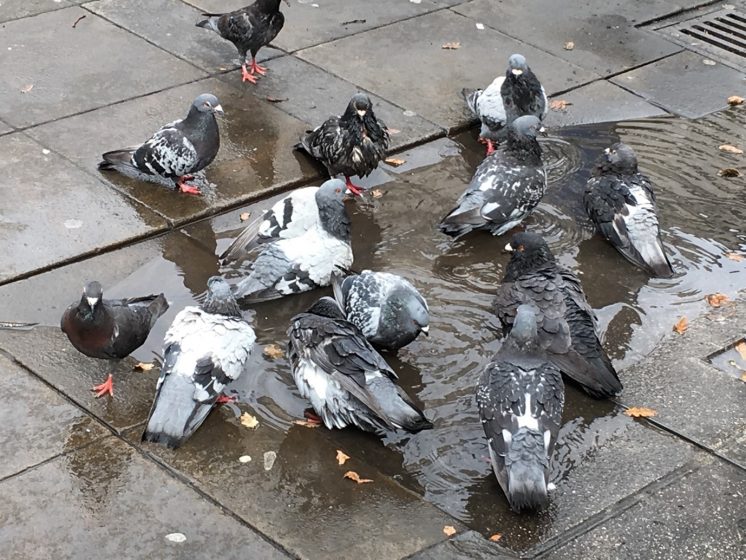
Meanwhile, around the same time that cities were invented in Mesopotamia, rock doves were worshiped, domesticated, and eaten by people. Some rock doves escaped to evolve into town or feral pigeons, adapting to and thriving from urban development. Feeding on people’s excess grains, these pigeons found shelter and nesting sites in urban construction. Their symbiotic contribution was to give excrement, as precious organic fertiliser, for the expanding agricultural systems that advanced human sustenance and well-being.
Fast forward to the present day… Now regarded as ubiquitous pests and the subject of much misinformation, pigeons and their excrement are thought to generate disease, deface civic buildings, and devalue the real estate owned by international investment corporations. Instead, synthetic fertiliser is now procured from industrialised carbon-based processes that profit agro-industrial global markets, while millions of city dwellers go hungry. Forced to migrate from subsistence farming to become dependent on faltering urban infrastructure and systems, city streets are paved with homeless and destitute people, rather than gold. This shift in values mirrors the nexus of climate, species, and cultural crises. Pigeons, however, are one of only six animals that can understand the reality of mirrors … a capability that now seems lost to humans.
Regenerative Designs, like decolonisation, have become “hot topics” recently and there are many things that our existing cities and future cities can learn from them. Indeed, there are things that they can learn from each other to co-create better ways of living and being. Remaining vigilant to avoid the pitfalls of dogmatic framework methodologies, we need to be simultaneously critical of the power within the systems we deploy and open to other ways of becoming. In other words, cities need to be able to emerge with planetary and human evolution, rather than trying to dictate it; something pigeons have done despite human attempts to cull them from cities. Regeneration must, also, be understood in the context of natural death and renewal of all living systems. If cities are to have future meaning, we must accept collapse as well as regeneration.
Co-created projects by artists and scientists may be interesting, but a co-learning dialogue with diverse, local people and other-than-humans, like pigeons, may be more insightful and creative. Such citizen participation could be more useful when it comes to regenerating how we live as a whole. We may then be able to attribute real value to how cities, serve their inhabitants by being embedded in ecology and culture, rather than extractive global economics and power for the few.
This is the message brought home from the perspective of a flock of feral town pigeons, one of the most intelligent, successful, and resourceful species on our planet.
Edith de Guzman
about the writer
Edith de Guzman
Edith is a researcher-practitioner, educator & curator working with diverse audiences on climate change solutions. A cooperative extension specialist with UCLA, she investigates best practices for the sustainable transformation of cities. She has a PhD in environment & sustainability, a master’s in urban planning & a BA in history & art history. She can also be found hiking, playing guitar, or creating art exhibitions that explore the human-environment connection.
Combined, art and science can deliver a one-two punch of fact and emotion — leaving the viewer/visitor/participant to complete the exchange by reaching a deepened understanding, a change of heart or mind, or better yet, being moved to take action.
Living in a post-truth era means that many of our fellow humans experience an outsized amount of their daily interactions through content generated by virtually anyone with access to the internet. It is a Shakespearean irony that at this very moment — when we have more access to information than ever before — the sheer volume of information seems not to be making us any wiser but rather drowning us in a sea of content overload and confusion.
The act of connecting art and science can be an antidote to this predicament. Combined, art and science can deliver a one-two punch of fact and emotion — leaving the viewer/visitor/participant to complete the exchange by reaching a deepened understanding, a change of heart or mind, or better yet, being moved to take action. At the intersection of art and science, we see Aristotle’s artistic proofs in action: logos (in our case, science) and pathos (art) come together to point to ethos (the viewer or participant’s interpretation).
Interdisciplinary partnerships to bridge these spaces can provide profound ways to practice these connections. Such a partnership is taking place in Los Angeles between Avenue 50 Studio, a nonprofit arts presentation organization, and The Los Angeles Center for Urban Natural Resources Sustainability (or LA Urban Center), an information and research destination hub that generates new science and delivers information and technology to broad audiences. A grant provided by the latter and by the US Forest Service Region 5 is enabling a series of art and science programming that is engaging artists and scientists around the climate crisis. The programming has included art shows and art talks on drought, wildfire, and extreme heat; a public art installation on shade equity; and panel discussions with both artists and scientists working in these spaces. The opportunity to forge this partnership between Avenue 50 Studio and the LA Urban Center came out of a mutual understanding by each entity that when it comes to engaging audiences on environmental issues, engaging only through the lens of art or science means missing the chance to challenge ourselves, grow, and forge new understandings.
We saw these ideas in action when this partnership of entities supported a group of 17 artists and activists in LA’s vibrant Highland Park neighborhood to raise awareness of shade as an equity issue in an outdoor public art installation called “Shade In LA | Rising Heat Inequity In a Sunburnt City.” Organized by community-based arts organization Arroyo Arts Collective, artists used umbrellas as their canvas to present a full spectrum of takes on the topic — from how the legacies of racist exclusionary housing policy still cause low-income neighborhoods to be hotter, to the role of tree canopy in providing physical and mental respite on hot days. The partnership is taking an action-oriented approach, and the opening event was paired with a free tree adoption event by the nonprofit organizations North East Trees and City Plants, with support from the LA Department of Water and Power, with more than 70 shade and fruit trees adopted by community members.
Public engagement — through the truths that art and science can deliver — can move people from observers/consumers to actors bringing positive change. In LA, we are fortunate to have a constellation of organizations looking to do just that, day after day.
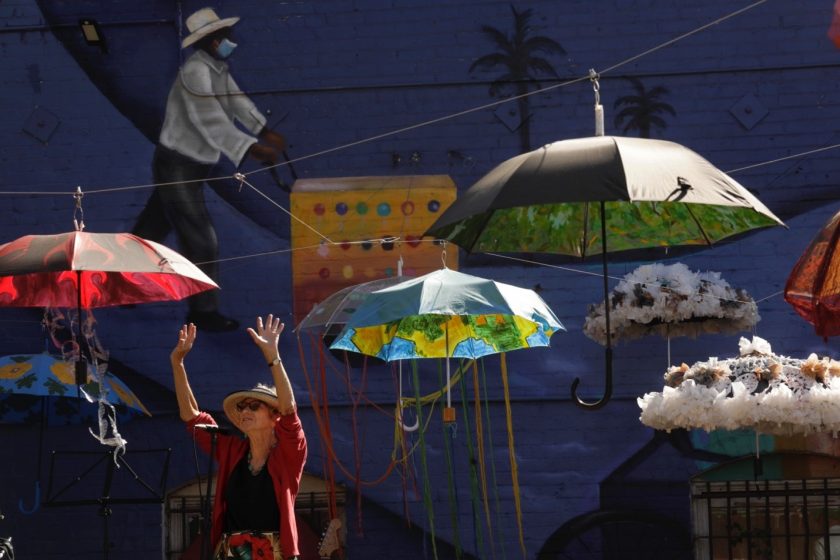
Photo: Genaro Molina, Los Angeles Times
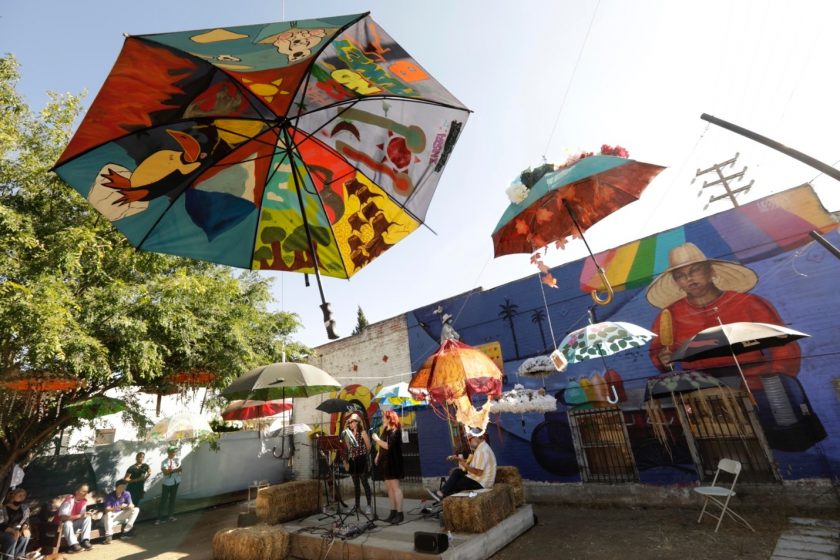
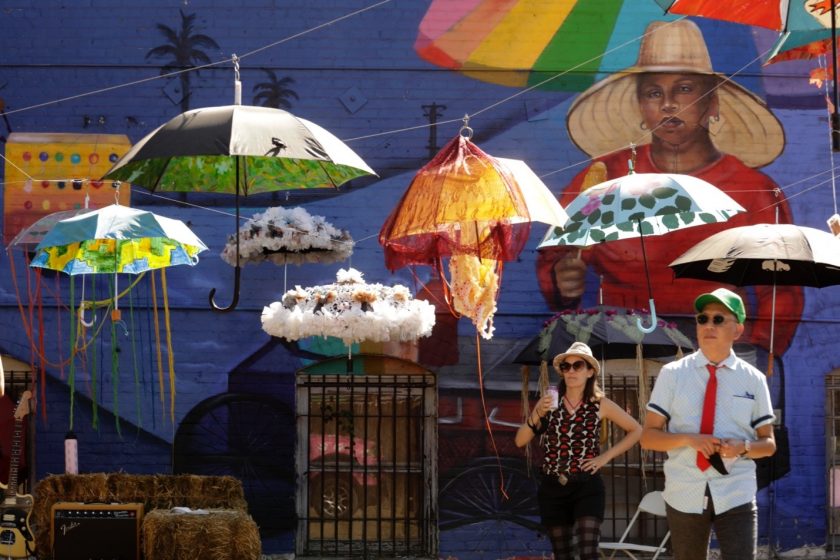
Carmen Bouyer
about the writer
Carmen Bouyer
Carmen Bouyer is a French environmental artist and designer based in Paris.
It’s striking how artists and scientists are complementary to each other’s way of relating to the world. They possess a sort of yin and yang polarity that can allow the weaving of the emotional with the practical, the ephemeral with the systematic, the unique with the replicable, the subjective with the objective, the intuitive with the rational.
Art and science, specific complementarity and common language
A common barrier I see to art-and-science collaboration is a misunderstanding of the ways in which we can profoundly enrich each other’s work. We often overlook the methodologies and ideals we actually share. That’s why I would like to expose the harmonies and communalities that touch me and that might serve as grounds for co-creation.
It’s striking how artists and scientists are actually complementary to each other’s way of relating to the world. They possess a sort of yin and yang polarity that can allow the weaving of the emotional with the practical, the ephemeral with the systematic, the unique with the replicable, the subjective with the objective, the intuitive with the rational. It’s crucial to acknowledge that we all carry our unique blend of all of these qualities.
The common element I see is a profound curiosity for the world and the way it works, visible and invisible. The general method seems similar as well: practices based on intensive research phases followed by many experimentations and the creation of a formalized result designed to be shared with a large number of people. This end result would touch its audience through highlighting common, frequently expressed patterns and ideas – discovered or seen through different lenses – in the realms of the practical or the emotional, using numbers or symbols. An ideal behind this shared quest to describe the world with much precision is often the possibility of improving the ways we all live together and our collective wellbeing.
Examples of ways of weaving artistic and scientific processes to regenerate ecosystems in cities
In ecosystem regeneration, interdisciplinary work is present at every step. The first collaborator is local land in all of its diversity of expression. It is the guide, the conductor of the orchestra. It is the species and the people who live there, as well as the caretakers of the land — gardeners, farmers, neighbors, technicians. Sometimes artists and scientists are from the place in which they work, but many times they are not and so their first task is really to learn, then co-create. From my professional experiences as an ecological artist and also as a witness to art and science collaborations I would like to give a few examples of how the artists can add their methods to scientific ones in service to the regeneration of a place at various stages of the project.
1. Learning from what already exists in and about the place
Artists will do research about the cultural practices and stories related to the place. They will get in touch with the local, tangible and intangible cultural heritage (oral traditions, stories, songs, poetry, musics, dances, handicrafts, costumes, festivals, rituals, etc.) as well as so-called contemporary art forms (painting, sculpture, photography, installation, performance, and video art), theater, cinema and literature. These researches will highlight cultural ways of relating to the local land, serving as milestones to design culturally relevant regenerative projects.
2. Getting to know a place through a data collection phase
Artists can propose sensing methodologies to learn from the land and get in touch with the realities of the place to regenerate. For example through classic documentation (sound recording, drawing, photography, video, etc) as well as collective approaches (shared meals, walks, discussions, workshops) artists can collect data and document what the land looks, sounds, tastes, smells and feels like. Artistic events can be designed to enable participants to experience the space in new and unexpected ways to learn from its specificities and nurture their bond with it. Through methods like deep listening, meditation, movement, dance, collective action, assembly, and more, the project team, locals, and visitors, are invited to explore their perception of the space. Artistic teams can also create open spaces, stages of some sort, where the sharing of existing land-based knowledge can happen, be highlighted, and celebrated.
In this sensing approach, artists usually bring a special awareness to the non-measurable parts of the local reality — the intuitive, emotional, symbolic, and spiritual, and by doing so complementing the evidence-based scientific approach.
3. Structuring a regenerative project for the space
When the time comes to design the regenerative project, artists might propose methodologies based on imagination. Using fiction and storytelling tools opens the space for things hard to tell and even the unknown to be expressed in metaphors. Centering fluid imagination unables the expression of the subjectivity of all the people involved. It is also a space where non-human forms of intelligence can be given a voice, through stories. Once verbalized, those important realities can be embedded in the making of informed design choices. In this co-creation phase, art can also be used to test ideas, by giving them shape, using 3D rendering, photo-collage, animation, fictional text, poetry, songs, theater, performance, and more. These media can be used as templates to compare various design options and make the best decisions in conversation with the local communities and various actors of the project. As we work collectively, artists might also offer safe spaces for the participants’ emotions to be expressed and integrated – often using simple games, offering a space to write, to tell — creating accessible spaces for conflict resolutions and co-construction.
Another important aspect is the artist’s capacity to bring her-his sense of aesthetic to the landscape design choices. The creatives might propose shapes and forms that will contribute to the beauty, meaning, even the feeling of sacredness of the regenerated space.
4. Regenerating the land
As we restore landscapes, we restore our cultural ways of relating to them. Ecological regeneration is inseparable from cultural regeneration. This may be in the form of songs, crafts, films, books, dances, collective activities, and more. Highlighting and restoring ancient land-based stories and celebrations, as well as amplifying new ones ties people to the land and to each other, ensuring the longevity of land stewardship. It roots land regeneration into collective healing, vitality, and joy.
Artists can amplify the positive effects of such regenerative projects by sharing their stories through film, photo reportage, audio piece, illustration, and more, diffusing the new narrative about the place, and offering clues for other people wishing to regenerate places elsewhere. The artist might have documented the whole project from its start and create a form of classic archive, or tell the stories in a very personal, non-conventional way.
As the regenerated space blossoms, artist teams often imagine activities that celebrate it and invite people to connect with it, to inhabit it. For instance, through the programmation of outdoor art events, such as art workshops, concerts, plays, screenings, or by installing art pieces in or around the space. This too makes it buzz with life!
David Maddox
about the writer
David Maddox
David loves urban spaces and nature. He loves creativity and collaboration. He loves theatre and music. In his life and work he has practiced in all of these as, in various moments, a scientist, a climate change researcher, a land steward, an ecological practitioner, composer, a playwright, a musician, an actor, and a theatre director. David’s dad told him once that he needed a back up plan, something to “fall back on”. So he bought a tuba.
Knowledge development needs to center the idea of a joined conversation: reach out in all directions, and be open to being changed by what you encounter. Through collaboration, we may create something we could not have created by ourselves.
We’re all part of the elephant
In my life as a theatre artist, collaboration across the boundaries of discipline and method is common because in is required … essential to the success the whole. If the set and costumes and lights, and music don’t “talk” to each other, we fail. If the design elements do not support the actors and text, or even fight them, we fail. If the actors are in a scenic dark — literal or metaphysical — and the audience doesn’t follow the story the playwright intended, we fail. Indeed, an oddity of theatre reviews for a designer is that it is better to disappear in supportive anonymity than be singled out for being “the only valuable thing in a horrible production”. For what is a produced play if not a wicked problem of a story telling truth? This is as true of productions Shakespeare or Lorrane Hansberry as it is of Lin Manuel Miranda, Lynn Nottage, Steven Sondheim, Sarah Ruhl, or Tristan Tzara.
Ok, maybe not Tristan Tzara.
Cities, as we more and more often say, are similarly wicked problems of scientific and technical knowledge, public opinion, policymaking, on the ground application, community, design, and storytelling. The storytelling I am talking about is both communicative (tell the story, from some angle) and exploring the story, perhaps from a new angle. That is, we explore the common challenges from the perspectives and strengths of our disciplines to learn something new, perhaps (or even probably) that some other discipline could not have discovered. This is as true for architecture and engineering as it is for ecology, sociology, community building, and artistic expression.
For this reason, we say: “through collaboration, we may create something we could not have created by ourselves”.
But we often don’t trust each other, and trust is the most fundamental, necessary but not sufficient requirement of collaboration. I have always been moved by Pippin Anderson’s thesis (in an essay at TNOC) that trust in other people’s ways of knowing is trained out of us, because our training is in great part focused on learning about how to recognize what is true and right — that is, learning a method to explore “truth”. The unintended consequence is that we learn to distrust or not even see other methods of inquiry. (Witness the persistent and tiresome criticisms of qualitative scientists by quantitative scientists.)
To collaborate across disciplines — and perhaps even aspire to transdisciplinarity — requires us to witness, trust, and be changed by other ways of knowing. I want to emphasize the latter in particular: that we should aspire to our own work within a discipline being changed by something we learn from another discipline’s approach to knowledge.
Yes. Right on.
To me, a starting place is to at least try to collaborate more, and make working teams that are more mixed — even mixed up? — in terms of discipline. The set designer doesn’t arrive at the end of the theatre production process to “dress” the actors; they are part of the production of the very beginning to working together to advance the ideas of the play.
Art may sometimes seem like a distant planet to science, but artists share many of the core personality traits of scientists: curiosity, imagination, a belief in the transformative power of ideas. But science and policy often seems to lag in their connection to art as a way of knowing and a source of ideas. (Practitioners often seem much more sophisticated in their integration with artists.) It may not be that scientists are the problem. Many scientists I talk to are personally enthusiastic about interdisciplinary collaboration and transdisciplinary action. More friction comes from the structures of science — hoary journal formats, narrowly conceived funding mechanisms, professional discouragements from out-of-the-box collaborations. [Three cheers for the European Commission, who seem to at least strive for a more modern and integrated approach to cross-disciplinary collaboration.]
In the realm of science and practice in urbanism, we often talk about creating multi-faceted and multi-disciplinary teams, but examples are more rare that we would like. I hope we can find new ways to mix science, policy, practice, and art into projects right from the start. In this way, all the knowledge centers of the project can learn from each other, and in particular, come to trust in other peoples ways of knowing. I firmly believe that this is the route to deeper and more usefully integrated knowledge — knowledge that can reach more people and can “meet them where they are”.
The Elephant is a well-known metaphor about systems thinking in which people can identify the parts of the object that they are familiar with (or perhaps think is most important), but don’t know it is an elephant. Discussion of the amusing image often doesn’t proceed much beyond the idea that that elephant is the whole system, the entire entity, of which narrower perspectives and points of view are unaware. What is worth adding is that the elephant doesn’t work without all its parts, and all those parts interact (or should). If we think of the elephant as knowledge, does it work without acknowledging all forms of knowledge? Not really, no. Does a city’s sustainable ecological design work if the knowledge centers of ecology, transportation, energy, social services, creative expression, etc. do not work together? Not really, no.
As I have come to come to like to say, knowledge development needs to center the idea of conversation across ways of knowing: reach out in all directions, right from the beginning of a new idea, and be open to being changed by what you encounter.
Mary O’Brien
about the writer
Mary O’Brien
Mary O’Brien is a multi-disciplinary artist—a writer and sculptor who initiates the research and community engagement plans for Studio of Watershed Sculpture the practice she co-founded with artist Daniel McCormick. Using an aesthetic lens, the Studio creates restorative interactions on damaged lands and waters through a scientific trajectory.
For art to remediate the damage humans have done to our own environments will require specific knowledge, as well as emotion; aesthetics as well as solid data—the kind of collaboration that many damaged rivers and lands could use right now.
Do No Harm
In a recent social media post, a science-minded citizen lamented the harm cairn-making had on a small North Carolina river. Among the post’s commenters, were many perturbed by the sight of a massive group of stacked rocks behind the floating carcass of a large salamander. But others decried the criticism, defending the freedom to create. An artist wondered what the fuss was about: Don’t we have more to be concerned with like toxins in the water, and dams?
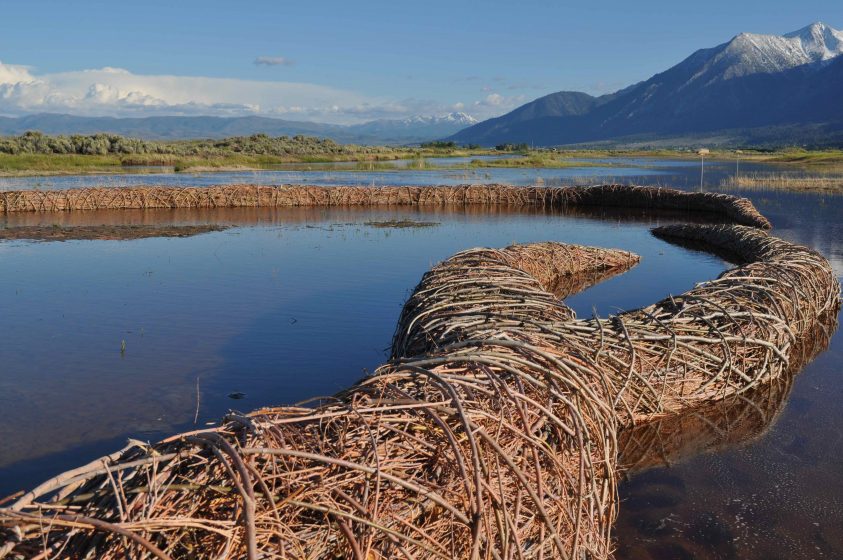
Sure, dams and toxic run-off do tremendous damage to rivers, but the damage created by pulling rocks out of the river to create social-media iconography goes beyond the river. The rock-balancing is not real science, nor is it really art. It certainly is not informed art. Conflating river rocks with artifacts and assuming they can be arranged better by human manipulation is an attitude stuck in an anthropocentric point of view.
The acts of rock-stackers have a wide-ranging impact. In the case of the North Carolina river, the habitat of the hellbender has been disturbed. Known as the “last dragons”, the hellbender is a threatened giant, salamander species dating back 65 million years. It is unlikely the river will recover before the next mating season. The National Park Service rightfully labels these acts as “ephemeral vandalism”. Accepting these damaging structures as art weakens the intersection where science and art should collaborate.
Art in natural environments is a juncture where the professions of art and science can collaborate in meaningful ways. Environmental Art must be informed enough to both respect the science and carry the emotions of those seeking the beauty of natural spaces. For art to remediate the damage humans have done to our own environments will require specific knowledge, as well as emotion; aesthetics as well as solid data — the kind of collaboration that many damaged rivers and lands could use right now.
Artists have an especially important mandate to work and share insights with scientists. Artists can express scientific information in ways no other profession can, reaching populations with information and ideas that might not otherwise be heard. Scientists can learn how influential their data will become when expressed as art. Scientists and artists practice similar approaches to their work, and like the “leave-no-trace” ethic of wilderness travel, a do-no-harm principle needs to permeate both professions.
As a start, artists who work in the natural environment could learn about the damage scientific ignorance can cause. They can experience this from those who know and care for the natural systems of our lands and waters. Scientists can acknowledge that professional artists need to acquire a deep knowledge of the issues their works embrace. No longer are Environmental Artists those who paint water towers or dig up habitats to make monumental earthworks.
This tendency to make the world respond to “our way”, often leads to conflict. By that definition, we are at war with our environment. This is where artists and scientists can practice the do-no-harm ethic in restoring the places and systems for which they are passionate.
When artists incorporate science into their works, they can develop expertise to remediate some of the issues that scientists have already figured out. They can create hard-working projects that serve communities. We would do well to heed the demise of the hellbenders. Humans may not be able to adequately repair the damage we have done to our earth, but we can collaborate to give it the advantage it needs to heal itself.
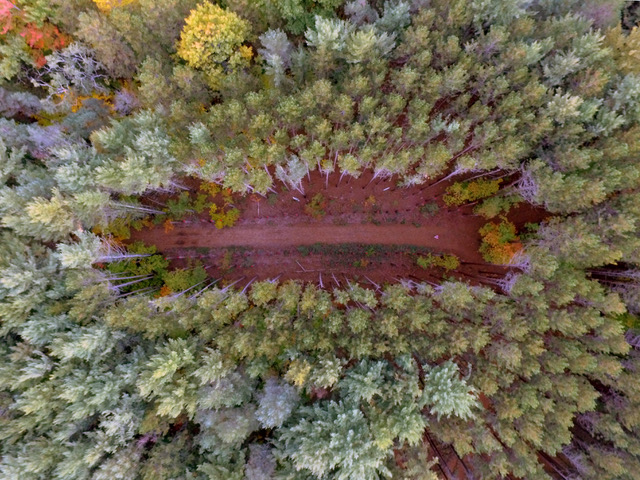
Sarah Hines
about the writer
Sarah Hines
Sarah has spent her career in the Forest Service linking scientists and scientific information with communities and decision makers at local to national scales to inform stewardship and develop social-ecological connections and resonance. Sarah has an AB in biological anthropology from Harvard University and an MS in environmental policy and MBA from the University of Michigan.
So many of our human needs and behaviors, when magnified times 7 billion or more, seem to conflict with creating benefits for nature. But this is precisely where the well-defined problem, a well-loved place, or a provocative piece of art or performance or data, can advance the conversation and practice.
We adults sometimes suffer from the misconception that consensus must be achieved before cooperation begins. Yet, watch any group of preschoolers around a pile of blocks or Legos, or on a playground, and you may see how cooperation may (emphasis on the may) arise organically even without consensus. The object in question — the blocks, Legos, or playground — serves as a “boundary object”, sitting in the middle among different perspectives (Star, 2010). The boundary object allows individuals to work together even if they have different perspectives, goals, motivations, or understandings (Grove et al, 2022). It opens up possibilities for communication and exploration, for co-creation.
Thinking about it in another way, how many times have you, as an adult, not known quite what to say or how to start a conversation with another person? Oftentimes, we unknowingly reach for boundary objects to get the conversation going — a compliment on a piece of clothing, on new glasses or a haircut, or even a piece of art hanging in someone’s office. Sure, this is not quite the same as co-creating something with someone, but it’s where we often start as adults — by reaching for something tangible that can spark interest, conversation, and sharing stories and perspectives. I believe that children are innately wired to create and to co-create. I believe also that they are wired to care, to express empathy and love, especially if they are raised with care and love. Adults share much of this same motivation, but it may manifest in different and more professionalized forms, or it may be snuffed out altogether by society’s attempts to replace creation and care with consumerism. Why not tap into what we know is there, deeply rooted, inside each of us?
For our purposes, it may be useful to think about potential boundary objects that may exist in cities to bring lots of different types of people together. Such boundary objects could be a problem, a place, or an object (such as art), acts of creation (performances), or even data systems. We can look for these boundary objects, however mundane they may seem, or we may create new ones. Their purpose is to discover, illuminate, and advance perspectives where before there was little exchange or interaction. In many cities throughout the country, the USDA Forest Service has been advancing systems solutions to complex problems by using boundary objects. “How do we reduce wood waste in Baltimore?” is a simple question that used “the problem” of urban wood and “the place” of Baltimore. The more we asked this question to different people the more perspectives and threads we heard — the problem was no longer just wood or Baltimore, yet the question was incredibly useful to begin to map all the different components of a system — one that included vacant buildings, neighborhood trees (or lack thereof), employment, health, social cohesion, recidivism, stewardship, art and design, and so much more. Thus, the systems diagram also became a boundary object.
While boundary objects are incredibly useful, they do not always inherently promote regeneration or regenerative projects — but they do get us closer. Regenerative projects can be thought of as endeavors that create reinforcing, positive benefits for people and nature. Creating positive benefits for nature is not always easy, obvious, or self-evident. So many of our human needs and behaviors, when magnified times 7 billion or more, seem to conflict with creating benefits for nature. But this is precisely where the well-defined problem, a well-loved place, or a provocative piece of art or performance or data, can advance the conversation and practice. This is where learning, love, and care can complement boundary explorations to find regenerative possibilities.“What would it take….?” is a favorite phrase that I like to use with respect to boundary objects. “What would it take for this neighborhood to have a better food supply?” “What would it take to reduce how vulnerable this neighborhood is to extreme heat?” “What would it take to help every person and creature who lives here feel welcome and loved?”
Zoom all the way out: there is a little blue dot, orbiting in space. It has billions of people — many wrestling with insecurities around their basic needs, plummeting biodiversity, skyrocketing greenhouse gas, and other toxic emissions trapped in its atmosphere, problems with too much and too little water, and more. It is our ultimate boundary object. “What would it take…?”
References:
Grove M, Carroll J, Galvin M, Hines S, Marshall LL and Wilson G (2022). Virtuous cycles and research for a regenerative urban ecology: The case of urban wood systems in Baltimore. Front. Sustain. Cities 4:919783. doi: 10.3389/frsc.2022.919783
Star, S. L. (2010). This is not a boundary object: Reflections on the origin of a concept. Sci. Technol. Hum. Values 35, 601–617. doi: 10.1177/0162243910377624
Keitaro Ito
about the writer
Keitaro Ito
Keitaro is a professor at Kyushu Institute of Technology and teaches landscape ecology and design. He has studied and worked in Japan, the U.K., Germany and Norway and has been designing urban parks, river banks, school gardens, and forest parks.
We considered how to implement Green Infrastructure in the local community to provide ecosystem services for local residents. Preserving areas such as wildlife habitats and spaces where children can play is a crucial issue nowadays.
Is this collaborative work with nature and science? Landscape design corresponding to nature
Ecosystem Services (ES) are the ecological characteristics, functions, or processes that directly or indirectly contribute to human well-being. Green Infrastructure (GI) is characterized by its multiple benefits. These days, GI is defined as infrastructure and land use planning which enhances regional and national sustainability in Japan.
This project started in 2008, and the restoration plan was developed in cooperation together with local residents. We also considered how to implement GI in the local community and could provide ecosystem services for local residents. Preserving areas such as wildlife habitats and spaces where children can play is a crucial issue nowadays. The planning site had the potential to be a place for children to learn local ecology.
Therefore, we designed the riverbank fishway not only for nature restoration but also as a place for children’s ecological learning. This chapter demonstrates the process of GI construction on the river Onga estuary in Japan to contribute to regional biodiversity conservation and provide ecological learning for children. It also should be noted that the purpose of urban landscape design or planning is to connect nature and people’s daily lives. In other words, an integrated approach in terms of “nature rehabilitation” and “lifescape” will be essential to create vernacular places in the future.
Design issues
At the first stage of this project, the presented image of the fishway was trapezoid-shaped. I thought it might have a function for fishway, however, it would not be beautiful for regional landscape. Therefore, I used the curvature of the Nishi River which flows next to the Onga River, when I determined the shape of the fishway for local landscape and ecological functions. It was difficult for designing the shape of the fishway, so I quoted the curvature of the Nishi-river because that natural river shape would reflect the land shape of this site (Figures 1 and 2).
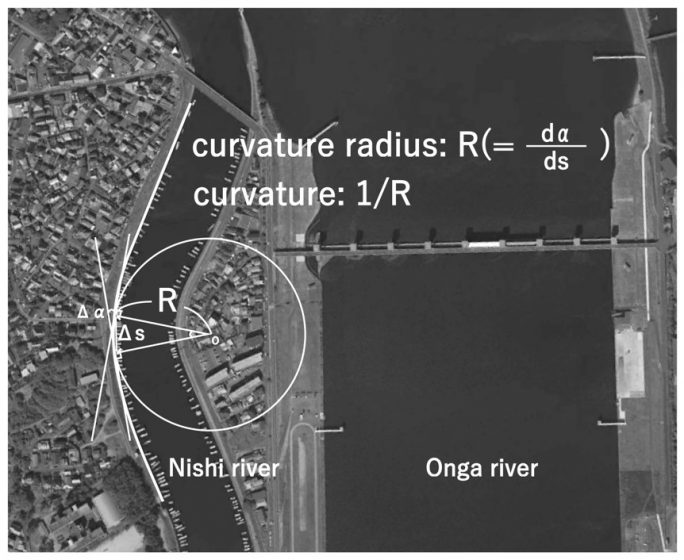
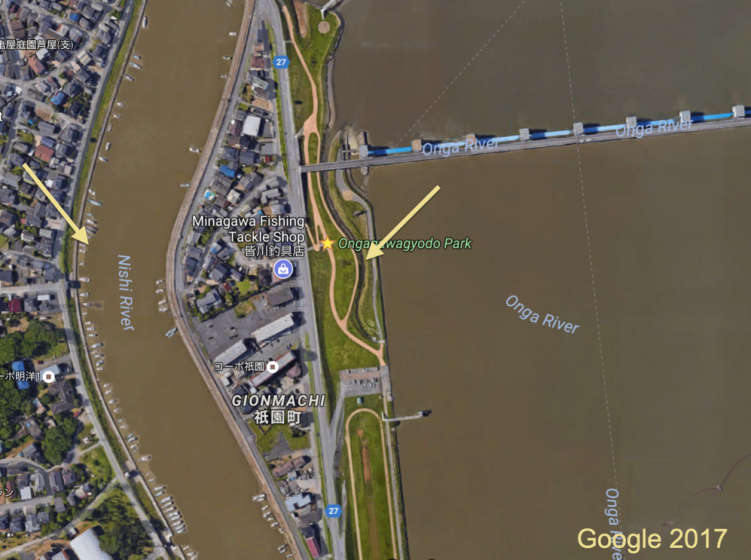
And after discussing current issues, we designed the shape of the new riverbank fishway by using a 1/200 scale study model. The tide and brackish water are distinguishing phenomena at the river mouth zone, and very important for many water creatures to build their habitats. After 10 years of construction, the river sand shaped the curve naturally. It was interesting to see our curvy shape for the corridor is corresponding to the natural design. Is this collaborative work with nature and science (Figure 3)?
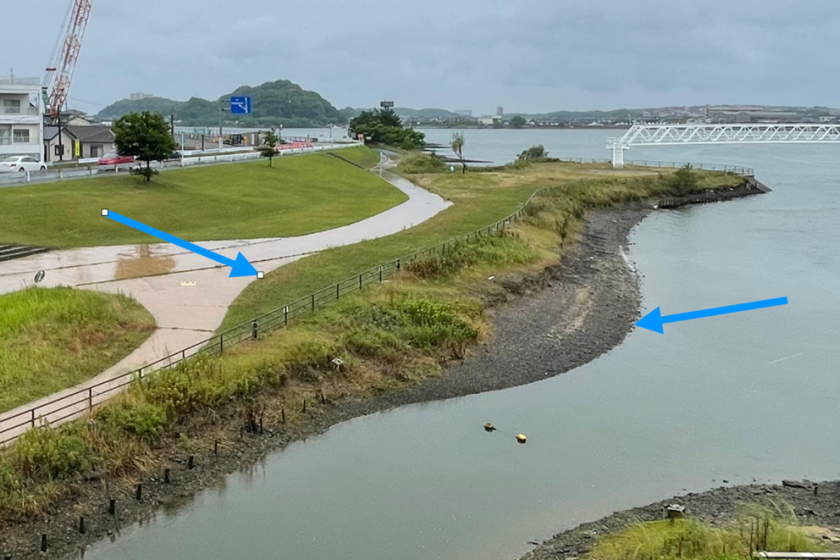
The new riverbank fishway was designed for biodiversity conservation and landscape design as well. Additionally, concerning accessibility to the water area for the users, the levee crown was connected to the water area by a gentle slope. The gentle slope angles were designed to consider children’s play space based on Gibson’s affordance theory(1979). Thus, these designs and changes would be beneficial for enhancing water biodiversity, and children can observe and learn about the abundant water ecosystem with easy access to the water surface. Finally, the area at the end of the lower riverbank fishway was designed for a tidal flat that can attract not only water creatures but also birds.
Mary Miss
about the writer
Mary Miss
Mary Miss has reshaped the boundaries between sculpture, architecture, landscape design, and installation art by articulating a vision of the public sphere where it is possible for an artist to address the issues of our time. She has developed the “City as Living Lab”, a framework for making issues of sustainability tangible through collaboration and the arts.
Maybe the easier part of the question is how artists and scientists can co-create projects: get two curious open-minded people from different fields who are willing to take a serious look at vocabulary and give them time to explore each other’s ways of seeing and thinking.
Maybe the easier part of the question is how artists and scientists can co-create projects: get two curious open-minded people from different fields who are willing to take a serious look at vocabulary and give them time to explore each other’s ways of seeing and thinking. At CALL we give them a specific task which is to lead a Walk through a neighborhood addressing an issue particular to that place. The artist speaks from her own point of view, knowledge, and experience as does the scientist.
We have considered whether there might be a curriculum developed that introduces both parties to these territories they may be unfamiliar with. Finding support for such a program or the time for this joint engagement is always a challenge as it is to fund projects. Funding becomes a primary issue and an area that we must endeavor to develop. Can foundations and granting agencies be encouraged to shift their support toward this kind of preparation as well as the projects themselves?
One of the most challenging aspects of this work is learning how to work in an open, equitable way with communities where the issues are often most pressing. And how are true partnerships with the people of a place developed? In the midst of busy lives with many challenges, how is it possible to create engagement? And since these issues have taken years or decades to develop, they will not be addressed by singular encounters. How are projects sustained over time? What kinds of relationships need to be developed with city agencies, NGOs, academic institutions, or community organizations to support ongoing engagement with communities? And how is the vision of the original partners maintained?
Cynthia Rozenzweig, along with many others, has emphasized the importance of making changes, having an impact at scale. It means that developing projects for cities is of the greatest importance. While doing that, how can we think in terms of providing models that are pathways for others? Asking questions seems to be the starting point for all this challenging, inspiring, often frustrating work. It will help us collectively imagine a future of greater sustenance.
Paul Currie and Funmi Adeniyi
about the writer
Paul Currie
Paul Currie is a Director of the Urban Systems Unit at ICLEI Africa. He is a researcher of African urban resource and service systems, with interest in connecting quantitative analysis with storytelling and visual elicitation.
about the writer
Funmi Adeniyi
Funmi holds a Ph.D. in Law (Human Rights Protection) and has more than a decade of cross-sectoral experience in the private, public and academic spaces. Funmi works at ICLEI Africa as a people-centered rights-based expert on various projects.
We aren’t only scientists or artists — we are translators. We, particularly when talking about sustainable urbanisation and regeneration, need to queer this idea of who is “allowed” to express creativity or provide solutions, and must support to develop more linkages between and across these different ways of being.
Creativity and creation in African cities
When asked to develop a reflection on the role of scientists and artists, we suppose the first question we need to ask is: which ones are we?
Can we not be both? We understand the need for those classifications in terms of subject matter or discipline, but we don’t necessarily have to be binary in our thinking. What is clear to us is that we — and society? — are caught in a normative position about the specific ways of knowing and practicing that scientists are expected to follow and that artists are expected to follow. For natural scientists, we expect that they follow clear rules and methods with a specific structure — particularly one that is “replicable” — to arrive at clear answers or solutions; while artists are expected to explore, try new processes, and are given specific license to create and be creative — and to a degree are expected to be inscrutable, abstruse, or perplexing.
We aren’t only scientists or artists — we are translators. We appreciate that there are different ways of expressing creativity in arts and in sciences, but these processes are named differently, and we, particularly when talking about sustainable urbanisation and regeneration, need to queer this idea of who is “allowed” to express creativity or provide solutions, and must support to develop more linkages between and across these different ways of being.
We are translators. We sit in the tension points between multiple ways of knowing and doing. And our role is, typically through deep listening, to put ourselves in the shoes of others and to try to understand their interests, and then to work out how to frame them through alternative lenses. Ideally, in this process, we’re helping people to articulate their own needs and agendas and helping them to articulate them to others.
This intermediary and translation role, at its core, aims to speed understanding and articulation across different sectors and different areas of urban development and ideally, help build trust and align complementary actions. This role acknowledges that because people experience and understand the realities of the world in different ways, the realities of the world are actually different. Everyone has developed their worldviews through their different lived and taught experiences. The reality of the same city could be very different if understood through the lens of an urban spatial plan or if it is understood through deep observation or through the daily hustle of a vendor.
The problem statement of much of our work in unpacking urban systems was framed well by a colleague in Dar es Salaam: “we planners aren’t thinking about urban dynamics; yes, we have trends and numbers in mind, but we aren’t looking at who is also planning and making the city. We can see the moto taxis riding and parked on the streets, but if we look at the plans, there is no demarcation for moto parking, and therefore they don’t exist! There are two separate systems, and they overlap very little”.
So, our job as translators is to bring these systems together into a bit more alignment and harmony — and the best way to do this is through co-productive process.
Elements such as equality, diversity, accessibility to knowledge, and reciprocity are central to co-productive processes. We embed these in the ways that we create space for different kinds of people and welcome their different walks and their different practices — whether as scientists, artists, or as practitioners on the ground — to come together and reflect on the work that they do and iterate better ways of doing. Co-production also urges these different interests to take a step back and reflect on how they are contributing to the change that they hope to see — this in itself is a creative act. It is in making sure that the spaces we create, and curate are diverse and not exclusive of contrarian voices. Practically, this is what we’ve been able to do with the RISE Africa platform, where the space for co-production of knowledge and better ways of doing is created amongst scientists, artists, practitioners, students, and different people.
Beyond inclusivity, we also consider the accessibility of knowledge. It is the norm that many regenerative projects are not inclusive of different thoughts, different voices. This matters in African urbanism because the premise of what cities are, and could be, is similarly based on normative assumptions and normative practice from the global North: Our urban planners and engineers have been trained based on principles developed in the North and therefore, their everyday practice, and what they consider to be good practice, may not intrinsically be based on the contextual possibilities in their own cities. Democratising spaces and embracing different forms of knowledge from different disciplines and different peoples is key to shifting these norms and creating true regenerative projects that speak to the lived realities of people on the ground.
Co-production has become the term for acceptable development processes, particularly in the Global South. However, it is often not questioned on whose terms these co-productive processes take place. Given that the central ideology of co-production emanates from people trained through tertiary education, typically of scientific background, the normative position is that it is a structured, scientific approach, based on a set of rules that are then imposed upon all participants in such a process. We realise, through working in global South contexts, that in order to successfully coproduce you need to embed artistic lenses and processes into the meaning-making process — the use of ‘boundary objects’ here is valuable in translating across realms of knowledge. The HiddenFlows photographic exhibition is a great example of how we invited photographers to share images of how resources moved through their cities and served as a valuable artifact around which we could organise several policy conversations.
To understand the contextual possibilities in African cities we must take a few steps back, probably centuries back to understand how co-creative processes worked in Africa and still work in Africa. In African cities, the arts and the sciences were not always separated. Art was part of science; science was part of art — the ways of understanding and making meaning of our environment made use of both scientific and artistic process. To have that understanding split into boxes, where we do not see the convergence, is foreign. It is alien to many African cities and to the understanding of how we co-produce and how we do things in Africa. And so, to align developments in Africa, we must review the background of what development means, or what co-productive processes mean. We must understand that binary classifications are not working for us, and we need to re-embed creativity in everyday practice.
Dave Kendal
about the writer
Dave Kendal
Dave is Senior lecturer in Environmental Management Geography, Planning, and Spatial SciencesBefore joining The University of Tasmania, Dave was a postdoc at the University of Melbourne, and before that a researcher at the Australian Centre for Urban Ecology, a division of the Royal Botanic Gardens Victoria.
Work as individuals and in small groups, rather than the large groups and teams that dominate contemporary science. This allows a few voices to explore the limits of their thinking, rather than retreating to the shared, consensus, agreement of most science.
Who are the Horse Lords of Science?
Engaging with the climate and biodiversity crises we face is a key step on our journey towards regenerative ways of living. Eminent scientists want us to consider extreme climate scenarios more seriously. Yet science isn’t very well equipped to explore post-apocalyptic futures. But art is. Classic films such as The Day the Earth Stood Still to Princess Mononoke explore the implications of human destruction of nature. Music also travels through dramatic climate change (from Billie Elish and metal drummer John Mollusk ft. Greta Thunberg) and environmental destruction (Joni Mitchell to Napalm Death).
I wonder if there is anything we can learn as scientists from the ease that music and film traverse diverse apocalyptic futures and trigger awareness in youth and broader society? I see a few lessons in how to better embrace and share our looming destruction:
- Work as individuals and in small groups, rather than the large groups and teams that dominate contemporary science. This allows a few voices to explore the limits of their thinking, rather than retreating to the shared, consensus, agreement of most science.
- Be political and aware, not ambivalent. Many scientists decry they have a political position. Yet all science is political. Revealing and embracing the political is a fundamental step
- These two lessons will inevitably lead to a third: embrace and celebrate diversity and inclusion. Engaging with multiple ways of knowing (culturally diverse, first peoples) allows us to explore multiple post-apocalyptic visions and inequality in the drivers and outcomes of the trajectories we are on.
I also wonder whether there is anything we as musicians can learn from scientists and the science of nature and society about creating music for the apocalypse? Perhaps:
- Embrace limitations and focus – today’s music software and tools allow unlimited possibility of expression. Yet meaning comes from deep engagement and limits, perhaps those we impose on ourselves or artificially introduce. Increasingly, some of those limitations come directly from science – either as field recordings or using scientific data in composition and arrangement.
- Draw inspiration from evidence. There is an enormous body of scientific knowledge on environmental harms, but also environmental solutions (e.g., nature-based solutions) that can inform our art and be the grain of truth at the heart of our art.
I’m inspired by the possibilities of artists and scientists working together, co-creating works to increase awareness of the biodiversity and climate crisis, and take some positive, regenerative steps toward solutions. Taking cues from the lessons above, we could:
- Work together in small teams where our distinctive and diverse voices are allowed full expression — even extreme expression.
- Scientists should be encouraged to explore the limits of science, to go where others fear to tread
- At the same time, artists can use scientific data to limit possibilities and focus their expression.
- Be political!
Most great bands release a couple of great records, then split due to “musical differences” or stagnation of ideas — perhaps the tenure system at universities entrenches stagnation. Collaboration with artists could be an antidote to this stagnation. Rather than getting the (Ph.D. or postdoc) band back together — let’s rail against our scientific past and look for new artistic collaborations to produce transgressive, experimental art/science.
Musicians can make this look easy.
Who are the Horse Lords of science?
Patrick Lydon
about the writer
Patrick M. Lydon
An American ecological writer and artist based in East Asia, Patrick uses story and community-based actions to help us rediscover our roles as ecological beings. He writes a weekly column called The Possible City, and is an arts editor here at The Nature of Cities.
Though science and art both give us reason to wonder and imagine and to move closer to nature-truth, both are also capable of missing the mark if operating alone. If science writes the truth of what we can see, then art undulates truth in the spaces between. In weaving together these stories we will find how to move forward.
Science and art are human stories. We often associate one with fact, and the other with fiction, however, both play their role in uncovering the particular kind of nature-truth required to bring about regenerative cities.
Part of our job as humans has always been to develop stories, like art, like science, that are capable of describing partial glimpses of this truth. Today, however, the human family is beginning to realize that as we bring together, understand, and respect more of these partial views of each one’s truth, the story becomes more full, more powerful, and more capable of bringing us into a place where our cities, our cultures, and the things we do come into alignment with nature’s truth. And nature’s truth, of course, is our home. This is where the secrets of regenerative cultures are held.
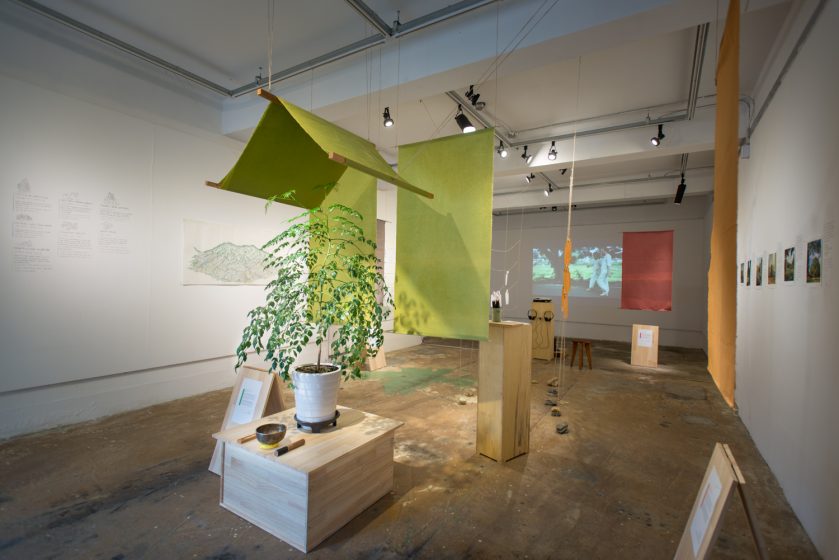
Our City as Nature studio celebrates this nature-truth in the current exhibition A City Designed by Trees, commissioned for the 2022 Daejeon Art & Science Biennale.* Weaving together both fact and fiction, the exhibition touches on ideas from soil scientists, farmer practitioners, trees, quantum physicists, and many others. Though seemingly disparate, these ideas come together as part of a fictional, multi-media narrative that shows what cities might look like if we learned how to listen to the trees. Visitors—children, mothers, students, and all sorts—are also asked to share their own tree stories in a prominent place within the exhibition too. All are validated as meaningful.
The trees also have their say, in multiple ways. In the back of the gallery, a fictitious punk rock song — claimed to be written by local trees — is played as a music video. A “water goddess” and “tree spirits” perform. Alongside the video, a collection of drawings mix the whimsical and the practical into single narratives. In one drawing, park maintenance crews replace lawn mowers with goats, and the result is regenerative maintenance and a city-branded goat ice cream. In another, 10-lane streets are converted into forests with regenerative natural farms and tramways. Finally, a large area is dedicated to the Bomunsan Forest Protocols and a ‘master plan,’ purportedly dictated by trees. Here, a local mountain is depicted in an imagined future where forests, streams, meadows, and wetlands are allowed right-of-way through cities instead of car highways. Is this what trees would do if they had their say?
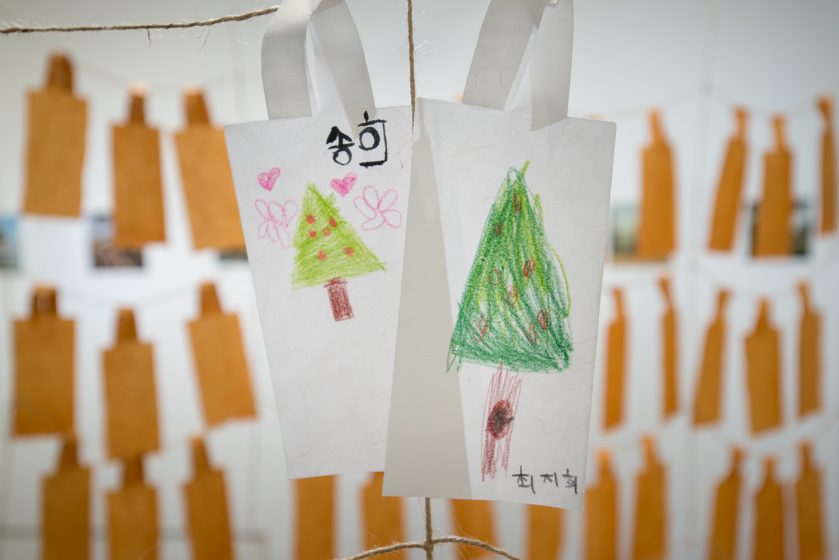
The work also reminds us of the importance of local cultural knowledge. Here in Korea, there are trees called Dangsan Namu, old trees of various species (Zelkova, Camphor, Ginkgo) which act as the guardians and wise elders of most villages and neighborhoods. They are sadly unknown in new urban developments, and often felled for the sake of a parking lot or apartment complex. To remind the visitors of the importance of these tree elders, the entrance of the exhibition features a newly anointed Dangsan Namu. When entering the gallery, guests are asked to bow and say hello to the tree before proceeding. This kind of cultural knowledge is linked to similar practices in other cultures in Japan, Ireland, and India, and then linked again to science by way of Fukuoka Masanobu, Diana Beresford-Kroeger, Robin Wall Kimmerer, and others. Such links, across and through ways of knowing and seeing are the basis for resilience, and vital for the act of creating new, regenerative stories.
This entire gallery space is, of course, also a story. Much of it contradicts the stories we tell ourselves as modern ‘developed’ societies. Most of it aligns with the stories of scientific knowledge, but some of it contradicts those, too. Yet, in this very interplay is the admission that nature-truth exists in ways that cannot be completely seen nor described by any one discipline.
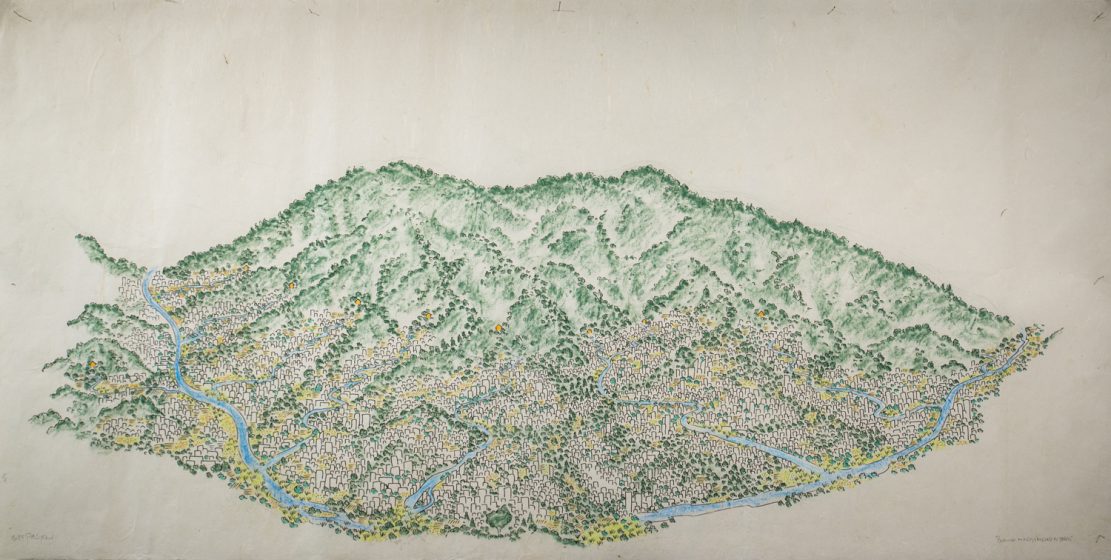
Though science and art both give us reason to wonder and imagine and to move closer to nature-truth, both are also capable of missing the mark if operating alone. If science writes the truth of what we can see, then art undulates truth in the spaces between. In weaving together these stories—to which each person finds a foothold of validity in this world—we will find how to move forward. This beautiful woven fabric looks strange or foreign sometimes. It challenges what we hold to be true, and then asks that we challenge it back, not in pursuit of being right in an individual sense, but in pursuit of moving closer to a regenerative story together. If we can hold onto that, then artists and scientists, leaders from various political and cultural backgrounds, and people of all walks and ways can stand together with this nature-truth, on this earth, in this universe, and gaze out at a possible future.
* The exhibition is an expansion on the 2018 article ‘A City Designed by Trees’ written here at The Nature of Cities. As such, it was made possible in large part by this very “idea hive” we call TNOC!
Baixo Ribeiro
about the writer
Baixo Ribeiro
Baixo is President of the Choque Cultural gallery in São Paulo.
We realized that we could go beyond simple artistic interventions in schools if we opened a creative dialogue with teachers and the entire school community. We ended up developing a methodology that combines art and science in the solution to one of the biggest problems of Brazilian education, which is school dropouts due to a lack of students’ interest in their schools.
I answer the question with an example of a project that involves art and science, as a way of making education in schools much more exciting.
The project began about fifteen years ago and aimed to animate public schools in poor neighborhoods on the outskirts of São Paulo, through artistic actions involving graffiti and other youthful languages so dear to students. Since the beginning of the 2000s, we have been dealing with these new languages in the field of contemporary art, through exhibitions, urban interventions, seminars, publications, and a cultural center formed by a gallery and an engraving workshop: the Choque Cultural.
We realized that we could go beyond simple artistic interventions in schools if we opened a creative dialogue with teachers and the entire school community: employees, parents, school neighbors, cultural agents in the neighborhood, and so on. We ended up developing a methodology that combines art and science in the solution to one of the biggest problems of Brazilian education, which is school dropouts due to a lack of students’ interest in their schools.
There are several reasons that lead to this lack of interest, according to the good research we have: lack of perspectives for the future, lack of belonging to the school, disconnection between the school and its territory, lack of integration between the communities that intersect in the school, lack of integration with the neighborhood, the city, and the world. All these shortcomings are further accentuated by the lack of adequate infrastructure in Brazilian public schools. For these reasons, our project has grown and gained greater importance, as it brings back the lost interest in the school environment and, consequently, strengthens the community spirit.
Our methodology is based on the following principle: the school must form autonomous and critical citizens, capable of transforming their future, acting creatively and collaboratively. Based on this premise, we undertake actions that stimulate the transformation of the school environment, making it more interesting and personalized, through collaborative artistic productions that count on the participation of all in the processes. Over the years of experience, we have created action chains that adapt to the different types of communities we serve: from the very precarious to those organized into broader networks.
The chains of actions can be summarized in the following topics: (1) Tasks for painting and creative occupation of areas of common use in schools with the participation of the entire school community; (2) Planting of vegetable gardens and orchards, installation of compost bins and recycling stations, installation of diverse workshops for collaborative work; (3) Mapping and connecting cultural agents in the territory for the administration of classes in the workshops and for the extension of the performance of the school community in spaces in its neighborhood; (4) Systematization of local experiences and development of network programs with a view to scalability.
After the experience reached more than 100 schools, formed a network with hundreds of teachers, and served thousands of students, we began to receive attention from universities and some awards. And we think that this recognition is very important because it can put us in contact with more artists and scientists capable of expanding our experience, taking it to other cities, and even to other countries where education suffers from the same evils as Brazil.
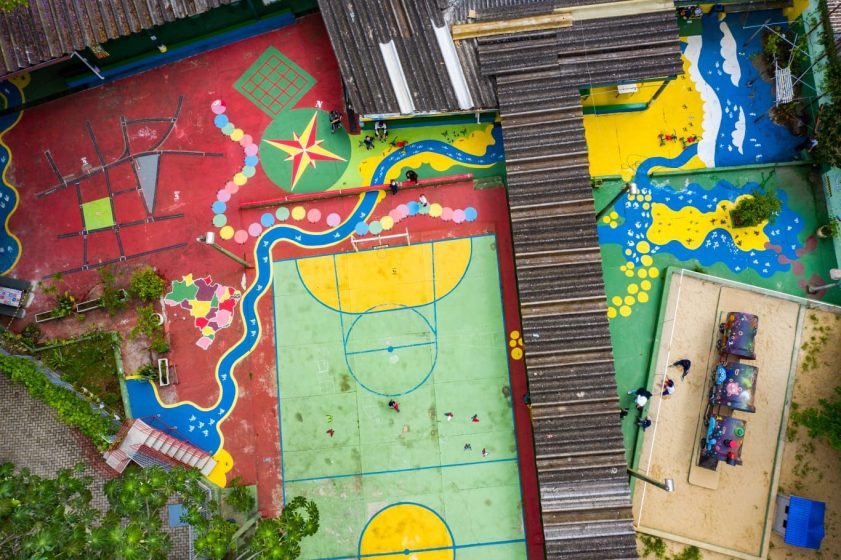
* * *
Percebemos que podíamos ir além das intervenções artísticas pontuais nas escolas, se abríssemos um diálogo criativo com os professores e toda a comunidade escolar: funcionários, pais, vizinhos das escolas, agentes culturais do bairro e assim por diante.
Respondo à pergunta com um exemplo de um projeto que envolve arte e ciência, como forma de dinamizar a educação nas escolas.
O projeto começou a cerca de quinze anos e visava animar escolas públicas de bairros pobres da periferia de São Paulo, através de ações artísticas envolvendo graffiti e outras linguagens juvenis tão queridas pelos estudantes. Desde o começo dos anos 2000 já vínhamos lidando com essas novas linguagens no campo da arte contemporânea, através de exposições, intervenções urbanas, seminários, publicações e de um centro cultural com galeria e oficina de gravuras: a Choque Cultural.
Percebemos que podíamos ir além das intervenções artísticas pontuais nas escolas, se abríssemos um diálogo criativo com os professores e toda a comunidade escolar: funcionários, pais, vizinhos das escolas, agentes culturais do bairro e assim por diante. Acabamos por desenvolver uma metodologia que une arte e ciência na solução de um dos maiores problemas da educação brasileira, que é a evasão escolar por falta de interesse dos alunos pelas suas escolas.
São vários os motivos que levam a esse desinteresse, segundo as boas pesquisas que dispomos: falta de perspectivas de futuro, falta de pertencimento à escola, desconexão entre a escola e seu território, falta de integração entre as comunidades que se intersectam na escola, falta de integração com o bairro, a cidade e o mundo. Todas essas carências são ainda acentuadas pela falta de infraestrutura adequada nas escolas públicas brasileiras. Por esses motivos, nosso projeto foi crescendo e ganhando maior importância, pois traz de volta o interesse perdido no ambiente escolar e, por consequência, fortalece o espírito comunitário.
A nossa metodologia parte do seguinte princípio: a escola deve formar cidadãos autônomos e críticos, capazes de transformar seu futuro, agindo criativa e colaborativamente. A partir dessa premissa, empreendemos ações que estimulam a transformação do ambiente escolar, tornando-o mais interessante e personalizado, através de produções artísticas colaborativas e que contam com a participação de todos nos processos. Ao longo dos anos de experiência, criamos cadeias de ações, que se adaptam às diferentes tipologias das comunidades que atendemos: desde as bem precárias até as organizadas em redes mais amplas.
As cadeias de ações podem ser resumidas nos seguintes tópicos: (1) Mutirões de pintura e ocupação criativa das áreas de uso comum das escolas com a participação de toda a comunidade escolar; (2) Plantação de hortas e pomares, instalação de composteiras e estações de reciclagem, instalação de diversificadas oficinas para trabalhos colaborativos; (3) Mapeamento e conexão de agentes culturais do território para administração de aulas nas oficinas e para a extensão da atuação da comunidade escolar em espaços do seu bairro; (4) Sistematização das experiências locais e elaboração de programas em rede com vistas à escalabilidade.
Depois da experiência ter alcançado mais de 100 escolas, formado uma rede com centenas de professores e atendido a milhares de alunos, começamos a receber a atenção de universidades e alguns prêmios. E achamos que esse reconhecimento é muito importante, pois pode nos colocar em contato com mais artistas e cientistas capazes de ampliar a nossa experiência, a levando para outras cidades e, até mesmo para outros países onde a educação sofra dos mesmos males que a brasileira.
Christopher Kennedy
about the writer
Christopher Kennedy
Christopher Kennedy is the associate director at the Urban Systems Lab (The New School) and lecturer in the Parsons School of Design. Kennedy’s research focuses on understanding the socio-ecological benefits of spontaneous urban plant communities in NYC, and the role of civic engagement in developing new approaches to environmental stewardship and nature-based resilience.
Regenerative artworks hold immense promise but also present a cautionary tale. They highlight a common friction many artists encounter when attempting to emulate ecological processes while also experimenting with aesthetic forms and concepts.
In 1976, John Seymour published The Complete Book of Self-Sufficiency, a call to revive traditional farming and permaculture practices. Throughout, Seymour highlights Albert Howard’s (1943) “The Law of Return” — anything you take from the land must be returned to the soil in order to ensure ecological health and resilience. The concept is arguably a westernized re-articulation of practices used by Indigenous communities and others that stress the importance of reciprocity and stewardship in land management practices. Robin Wall Kimmerer explores this beautifully in her book Braiding Sweetgrass (2015), explaining that today, landscapes are not necessarily “broken” but rather our relationship with land is fractured. She advocates for what Enrique Salmón describes as “kincentrically managing the land”, an act of reciprocal caregiving that honors the needs of more-than-human communities alongside human ones.
Over the past decade, the popularization of regenerative practices in agriculture and urban design is perhaps a contemporary take on this ethos with artists and designers experimenting with a range of strategies from bioremediation to novel platforms for social engagement. These efforts draw from a long history of artists exploring the notion of regeneration, especially in urban environments, a response partly to legacies of systemic racism and urban disinvestment. In North America, one of the earliest contemporary examples is Patricia Johanson’s Fair Park Lagoon (1981) in Dallas, Texas. Working with local scientists, city planners, and engineers, Johanson designed large terra cotta-colored sculptural forms from gunite that create pathways and habitats to restore the degraded Leonhardt Lagoon.
In another well-known work, Revival Field (1991- ongoing), artist Mel Chin collaborated with agronomist Rufus Chaney to create a land-based sculpture that doubled as an experiment in phytoremediation, a form of bioremediation that uses hyperaccumulating plants to absorb substances such as heavy metals in an attempt to remediate the Pig’s Eye Landfill in St. Paul, Minnesota. More recently, other artworks like Francis Whitehead’s SLOW Cleanup, (2008-2012) similarly experiment with phytoremediation to restore land contaminated by gas station storage tanks, revealing the spatial distribution of racial and economic inequity on Chicago’s West and South sides.
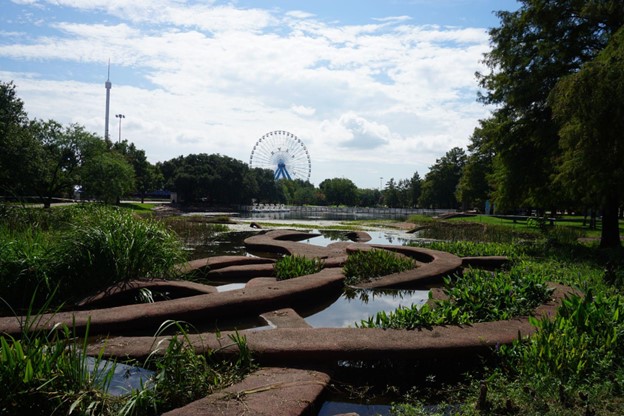
Regeneration, however, is not simply about environmental remediation. There is a myriad of practices globally that one could contextualize as being regenerative socially, economically, or technologically (see, for instance, Shai Zakai’s Concrete Creek (1999-2002) or Zheng Bo’s Plants Living in Shanghai (2013)). Regardless of the focus, what is perhaps most important is the ability of these artworks to bridge siloed disciplines and inspire new collaborative practices that can uncover the hidden dimensions of a particular challenge. An approach that Elizabeth Grosz describes as a necessary disorientation or “making strange”, can motivate new perspectives and more earnest, open dialogue within planning processes. Yet, despite evidence of the benefits artists provide in these contexts, creative collaborations with urban planning offices or scientists remain patchy and underfunded and are easily co-opted by museums or developers who assume an artist can simply be inserted into a place to solve a presumed “problem”. Choreographer Sarah Wilbur describes this as a “philanthropic route to gentrification”, emphasizing the need to create inclusive platforms for diverse stakeholders to have a voice in any attempt at so-called “creative placemaking”, or in this case “regeneration”.
Regenerative artworks thus hold immense promise but also present a cautionary tale. They highlight a common friction many artists encounter when attempting to emulate ecological processes while also experimenting with aesthetic forms and concepts. Perhaps we need to revisit Howard’s Law of Return with a multispecies perspective in mind and find ways to meld traditional ecological knowledge with new regenerative practices to cultivate an art-science knowledge nexus. More than this, now is the time to bring artists to the planning table — precisely because they open a space for new ideas and ways of working which are sorely needed as urbanization and climate change accelerate globally.
Lindsay Campbell
about the writer
Lindsay Campbell
Lindsay K. Campbell is a research social scientist with the USDA Forest Service. Her current research explores the dynamics of urban politics, stewardship, and sustainability policymaking.
There are benefits to bringing together multiple perspectives, to tackle the truly wicked problems that we haven’t been able to solve with narrow, disciplinary solutions.
Throughout my career as a research social scientist with the USDA Forest Service, I have sought out engaging with the arts as another “way of knowing” that is complementary to scientific knowledge — both of which have relevance to the work of land management and environmental stewardship.
Specifically, I co-lead the Urban Field Station Collaborative Arts Program (UFS Arts) with The Nature of Cities and a network of partners. With UFS Arts, we:
- Build understanding of and engagement with urban social-ecological systems through arts.
- Facilitate transdisciplinary collaboration between artists, scientists, and land managers.
- Curate events and public programs that explore ideas emerging from these collaborations.
We work in multiple modes including: artist residencies, convenings, and exhibitions, and I’ll offer some reflections and examples of each here to show how we co-create regenerative ideas and actions in cities.
With the residencies, we embed artists with agency teams of scientists and land managers, curating collaborations instead of commissioning artwork. We promote mutual curiosity and reciprocal sharing of ideas and approaches. We are less interested in bringing in artists “after the fact” to promote, design, or translate our scientific findings, instead, we are interested in artists-as-investigators, and how we can work across disciplinary divides. We are interested in the way artists push us at all stages of knowledge production to:
- Pose new questions we wouldn’t otherwise;
- Engage different methodologies for understanding place and the environment – including more embodied and emotional approaches; and
- Communicate differently about our insights and reach the public in new ways.
Each of these stages is an opportunity for us to produce new knowledge, reflect critically on our practices, and transform our work. For example, one of our 2016 UFS Artists in Residence, Mary Mattingly, created Swale, a floating food forest. The project began with the observation that foraging is prohibited on NYC parkland and posed the question: “why can’t food be free?” The residency helped catalyze reflective conversations between the public, land managers, and researchers about how and why we might adjust the rules around foraging and food in parkland in the future. And the images of and experiences on Swale had a broad public reach — sparking fascination, learning, and delight.
Our convenings take many forms, but I draw attention here to our Stewardship Salons. We began this work with a Native Hawaiian master teacher, Kehuki Kealiikanakaoleohaililani, who led a 2-day workshop with NYC and Hawaii practitioners to give them exposure to native Hawaiian lifeways in order to enliven and expand their land management and conservation work. Kekuhi encouraged us to “start with who we know” in organizing these learning spaces, so we created a rotating series of salons. We facilitate place-based, co-learning between land managers, scientists & artists, engaging diverse cultures of care in the cosmopolitan city of NYC and creating a non-hierarchical space for dialogue. In this work, we share biocultural stewardship practices and surface place-based narratives about the land that are sometimes less often shared, read critically together, are embodied in space through walks and sharing food, and strengthen our own community of practice. I have heard in our evaluations that the artists find the salons to be one of the most grounded ways of learning about the practice of stewardship in NYC. Our natural resource management colleagues are eager for professional development, and space to reflect and think. And as qualitative researchers, we have much to learn from sharing lived experiences of place. So, there is something to be gained for all of us, engaging as both students and teachers in learning from place (See also McMillen et al. 2020).
Finally, we curate exhibitions, both in-person and online. Who Takes Care of New York? Debuted at the Queens Museum in 2019 and was adapted to virtual with The Nature of Cities in 2020. We brought together social scientists, data visualization specialists, curators, and artists to co-produce an exhibit that brought stewardship to life through maps, photographs, publications, videos, and public performance. With this work, we sought to amplify the voices, stories, and practices of stewards and to inspire attendees about their power to create positive change in their neighborhoods. Our exhibition takes on many modes:
- We notice, connect with, and care for the urban forest through landscape photography.
- We amplify the voices and actions of stewards through mapping and artist publications.
- We make stewardship networks more visible through data visualization and performance art.
- We adapt to change, envision, and enact new worlds through spatial mapping and through photo collages rooted in interviews with stewards.
Ultimately, I believe that care is not finite. If we can see it more clearly, perhaps we can grow it, and maybe that’s the most transformative action we can take in our urban ecosystems.
Reflections on process – Looking back on these different forms of art-science-land manager collaborations, I have a few reflections on what it takes to make them successful and why they are so important:
- Collaboration takes time: you can’t just put people in a room and expect collaborations. You have to invest in the relationship: the structured meetings, but also the studio visits, the coffee chats, the walks in the field. Sometimes the best ideas are scribbled on a napkin over coffee.
- Transdisciplinarity requires resources, and those can be hard to come by. We tend to fund things in silos — takes a leap of faith by a funder to support people “coloring outside the lines” — and learning-by-doing.
- This work requires mutual respect and willingness to flex. If you just want to stay in your lane and do what you are trained to do, then co-production is not for you.
- But, ultimately, I’ve learned they create opportunities -They provide different entry points for folks who have historically been excluded from science and decision-making roles in urban ecology, so they offer opportunities from a diversity, equity, inclusion, and justice (DEIJ) perspective to meaningfully expand our community of practice.
Finally, there are benefits to bringing together multiple perspectives, to tackle the truly wicked problems that we haven’t been able to solve with narrow, disciplinary solutions.
Ania Upstill
about the writer
Ania Upstill
Ania Upstill (they/them) is a queer and non-binary performer, director, theatre maker, teaching artist and clown. A graduate of the Dell’Arte International School of Physical Theatre (Professional Training Program), Ania’s recent work celebrates LGBTQIA+ artists with a focus on gender diversity.
We listen to the rich narratives of scientific knowledge and help translate them into words or images that invite passersby to learn these stories, to understand more of the land and sea around them; we arrange for a mural or poetry to be placed on the outside of the wall that is begging for decoration, ask for a storytelling bench for where we have seen people looking for a place to sit.
There are many different ways of looking, and there are many different ways of listening. As a theatre artist, I look for how people use space, for opportunities for them to explore movement and texts with their voices and bodies. I listen for narrative arcs, compelling stories, emotionally charged messages, and sounds that create a sense of geographical location. I know that scientists look and listen for patterns in natural systems, patterns in land use, and qualitative and quantitative data that can be analyzed. All of this information — what I have been trained to gather and what scientists are trained to gather — is valuable, and it is particularly valuable when combined.
I recently took a walk with a scientist, Dr.Michelle L. Johnson from the USDA Forest Service Northern Research Station around our shared neighborhood of Astoria, Queens. One of the neighborhood projects she pointed out to me was the restoration and planting of a shoreline riparian zone. The first thing that struck me about the area was the lines of shiny ties strung over the planted area, dancing in the sunlight. I wondered if they were an art project; instead, I learned they were there to attempt to keep birds from eating the new plantings. The second thing that struck me was the large amount of trash washed up by the tide into the catchment area of the new riparian zone. Michelle pointed out the ineffective nets that had been set up to prevent the trash build-up, worn down and twisted by the tides. We saw the baby plants that had been seeded into the zone, how some were doing better than others, and where the sea wall had been patched to resist flooding.
As I listened, I thought about how privileged I was to experience this explanation, this rich description of the shoreline’s life. If Michelle hadn’t been with me, I would have walked by unaware, perhaps momentarily enjoying the sparkle of what I now know are decorations designed to keep away hungry birds. Maybe I would have still noticed the trash, with some consternation. But without this narrative that Michelle so generously supplied, I would have had very little conception of what was actually going on in the riparian zone, of the importance of this work to combat rising tides and to keep the basements of the nearby low-income New York City Housing Authority apartments from flooding. How many people, I wondered, walk by each day without a second glance at this project? How many people are missing this narrative?
I can imagine a project where, alongside scientists and engineers, artists are involved to co-create in this riparian zone. We take the invitation of a bird-repellent system of shiny tags and turn it into an intentional art piece that brings joy to onlookers and still effectively keeps away hungry avians. We listen to the rich narratives of scientific knowledge and help translate them into words or images that invite passersby to learn these stories, to understand more of the land and sea around them; we arrange for a mural or poetry to be placed on the outside of the wall that is begging for decoration, ask for a storytelling bench for where we have seen people looking for a place to sit. In all of this work, we listen to and learn from our scientist collaborators, and they listen to and learn from us, each sharing the information that we have gathered. We share, we learn, we create something beautiful together – something richer than we could have created alone.
Wendy Wischer
about the writer
Wendy Wischer
Visiting Director for the Contemporary Art Galleries at UConn in Storrs, Connecticut, Wendy Wischer is an artist and educator with a focus on artwork in a variety of media from sculptural objects to installations, video, projection, sound, alternative forms of drawing and public works. Much of the artwork is based on blurring the separation between an intrinsic approach to working with nature and the cutting edge of New Media.
As an Eco Artist, I am compelled to focus on environmental issues; finding pathways, and creating experiences, that translate data into personal meaning in hopes of finding impactful ways to connect people more deeply with the environments they live in and with each other.
The wording of the prompt is something to take note of — regenerative implies healing and restoration to something injured or damaged so we begin from a place where healing is needed. Since it can also refer to a spiritual renewal, we can consider the possibility of renewing our relationships with our environments and communities. We can use climate change as an opportunity to repair our relationship with the planet.
For artists and scientists to co-create regenerative projects, a platform is needed where they can come together to discuss and share ideas. A platform that values the input of both equally, while recognizing that each discipline may have different values. We need a platform that embraces imagination as well as scientific research, of the past, and an understanding of the current changes, while also incorporating innovation around the future.
At the same time, community engagement is a critical component that isn’t mentioned in the prompt. Community input is necessary for projects to be relevant and respond to the values of the specific community. There are elements of the history and culture around a city that can be valuable to restorative endeavors. Community engagement also holds the possibility of creating citizen stewardship of the projects which is necessary for them to be, and remain, sustainable. We have to let go of the individual and work with each other for each other. We need to foster public trust and social coordination.
Some of the conversations around restoration question what we are restoring to. On a planet that is changing rapidly, we need to factor this transformation in which means embracing these changes as part of the healing. Adaptation will need to be at the foundation of any successful project.
Often, the artist, similar to the scientist, seeks connections or patterns that are not obviously apparent to everyone. This search for a common thread by the artists can broaden the intellectual and scientific research by exploring areas not directly related to the observable evidence. They can explore areas that may be apart from the original question and in a different direction than the conclusion, yet prove to have links in a variety of ways from emotional, psychological, cultural, and discursive connections that then offer new ways of seeing and understanding the original data or questions.
I believe that art and creative problem solving can play a significant role in helping us understand the complexity of the world around us, see critical issues from multiple perspectives, and communicate with each other in ways that embrace diversity and foster respect and responsibility. The success of this is expanded greatly when combined with a deeper scientific understanding of these critical issues. This is where interdisciplinary collaboration shines, as we can do far more together than in one discipline alone.
As an Eco Artist, I am compelled to focus on environmental issues; finding pathways, and creating experiences, that translate data into personal meaning in hopes of finding impactful ways to connect people more deeply with the environments they live in and with each other.
Marguerite Perret
about the writer
Marguerite Perret
Marguerite Perret conducts collaborative, arts-based research that scrutinizes the narratives inherent at the interstices of art, science, healthcare and personal experience.
We are all time travelers, but if we employ creativity and science as essential tools for personal and environmental resilience, we can embrace a sense of purpose-based optimism in the face of the many challenges we face in the present and future.
Navigating wormholes: A re-imagining of time and place
The transition from town to pit is through a small wooden shed-like Visitors Center, where visitors pay a $3 fee to enter a long narrow arched tunnel lined with concrete walls painted white and illuminated with a continuous line of outdated fluorescent light fixtures overhead. It has a dystopian 1960s sci-fi sensibility, reminiscent of low-budget movies that featured homemade time machines. This portal opens onto a small, covered observation deck with a striking view of a disarmingly beautiful copper green lake set in a granite crater that measures 7,000 feet long by 5,600 feet wide and reaches a depth of 1,600 feet. Then it occurs to you — you are not traveling through time. The Berkeley Pit in Butte, Montana is a wormhole where the past, present, and future collide.
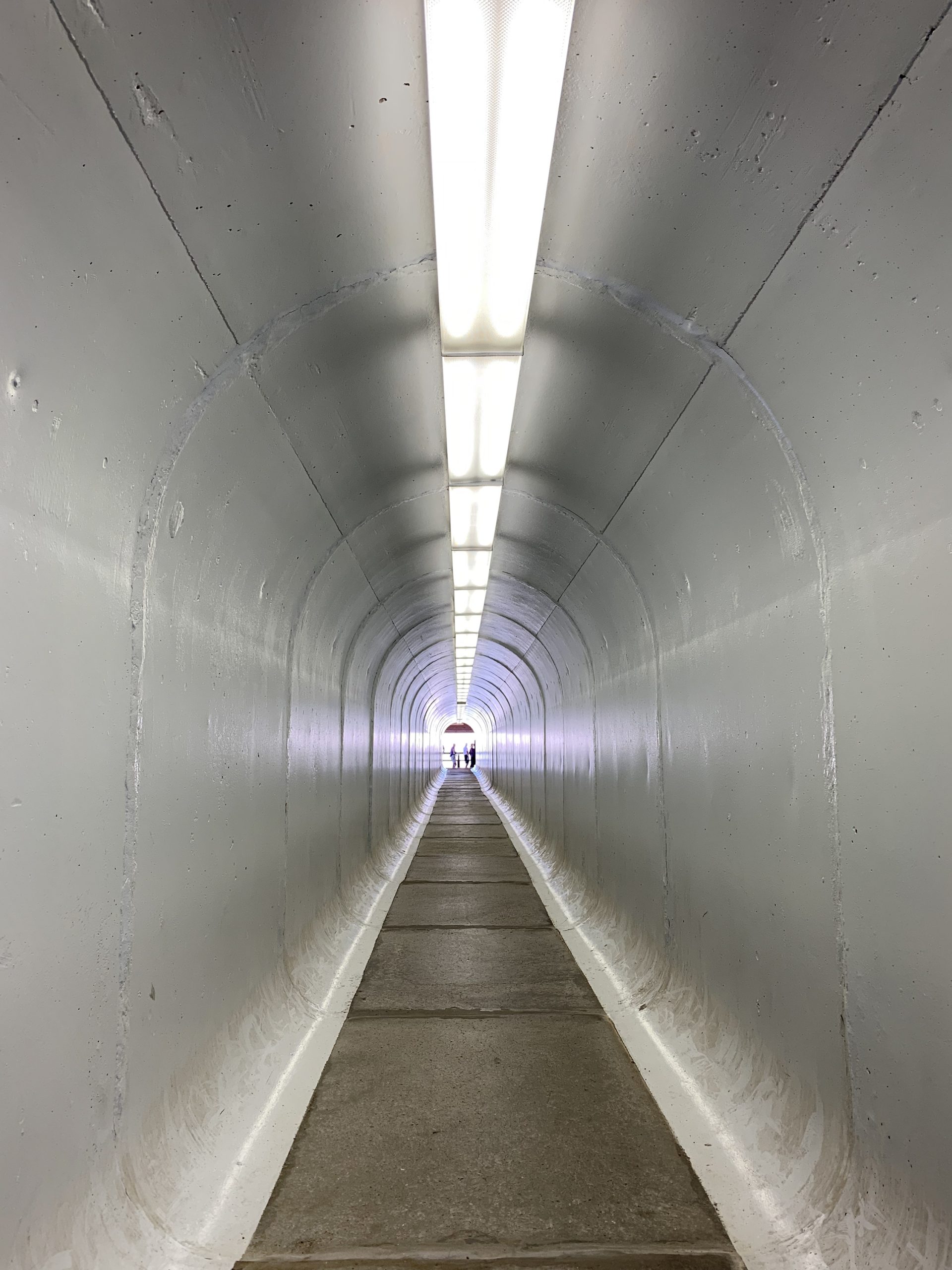
Theoretical physicist Sabine Hossenfelder suggests that the past still exists, while the future is already happening. Certainly, this is true of the Berkeley Pit, the largest superfund site in the United States. The discovery, extraction, and processing of rich copper deposits in Butte in the 19th and 20th centuries facilitated electrification and technological modernization of the world. But this past remains present as toxic water from a deep bedrock aquifer endlessly rises through a vast network of underground mine shafts, flooding the pit. Maintaining pit water levels through treatment and redistribution to prevent contamination of drinking water or entering the watershed or killing wildlife, is a forever problem.
I am visiting the pit as part of a fellowship grant focusing on superfund and brownfield sites in Montana and Kansas — two disparate states connected by the Missouri River. Both superfund and brownfields involve physical locations that have been compromised by commercial or industrial activity. The difference, as defined by the U.S. Environmental Protection Agency, is a degree of contamination. Currently, there are 1,334 superfund and 450,000 brownfield sites nationwide
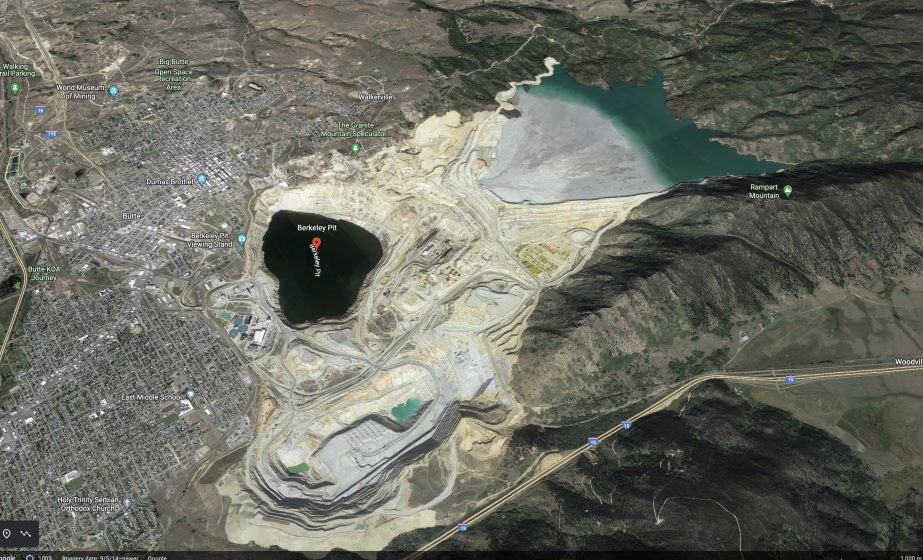
In Topeka, there are 19 brownfields along the Kansas River, which empties into the Missouri. I am developing an interdisciplinary art/science research project to re-imagine these and other less dangerous but still environmentally degraded sites. Because communities struggle with finding the financial and civic support to rehabilitate these properties, they often remain invisible, ignored, or forgotten, like ghosts on the landscape.
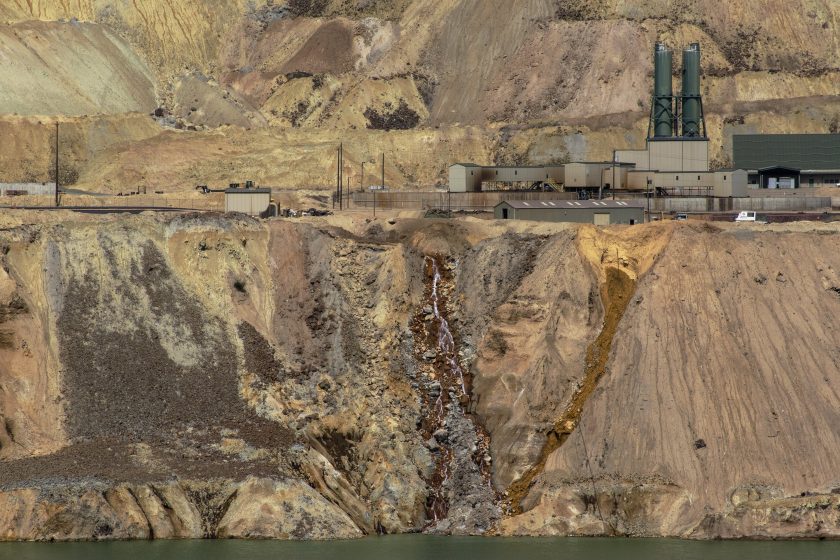
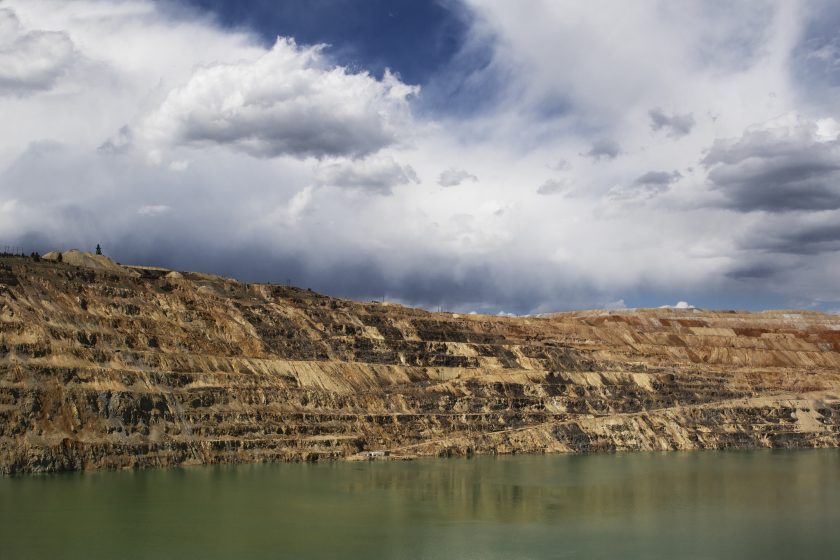
A common criticism of many reclamation initiatives is the lack of creativity and innovation in their approach, but collaborations can lead to fresh ideas and inventions. The goal is to advocate and build support for an ecologically sound plan by engaging a broad audience intellectually, emotionally, and through the senses. And while this project is primarily rooted in the sciences and visual arts, implementing change will require the participation of an expanded network that includes governmental agencies, and community representatives.
One planned component is a re-imagining of these sites through augmented reality (AR) interventions developed by art students working closely with university biology faculty and their students. A website will direct visitors to physical locations, where, by positioning their phones or other portable devices over a marker, they will be able to view still and animated conceptualized proposals offering alternatives to distressed properties and links to the underlying science-based content. A self-guided tour will be available to the public in summer 2023 and featured in an international AR festival later that year.
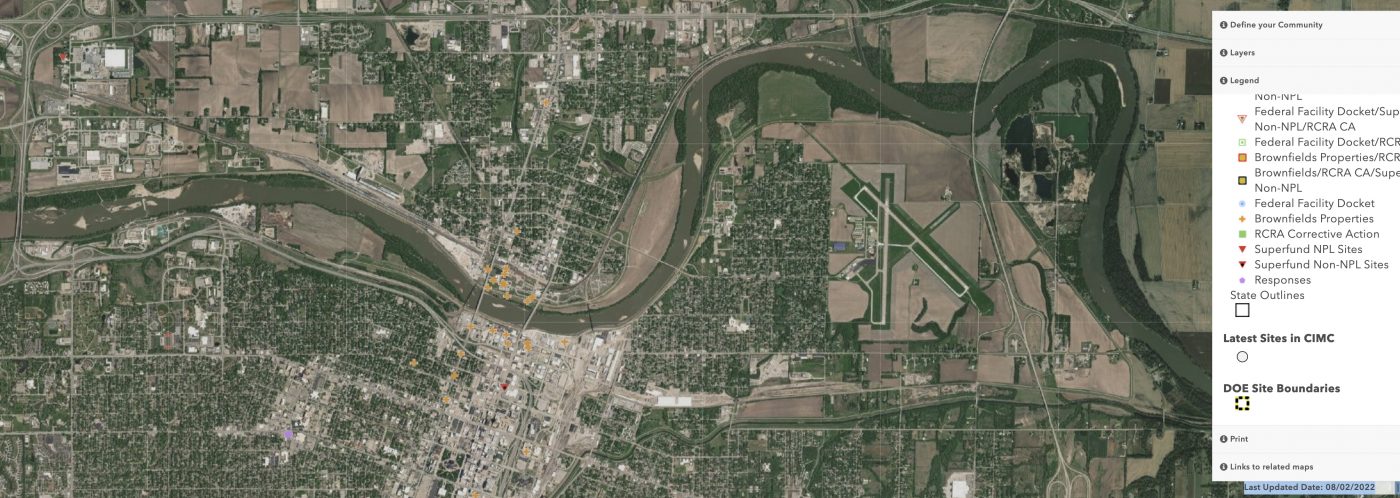
In complement, I will be working with field biologists and collections managers surveying and mapping current and historic biodiversity at these sites. For over a decade, I have worked in biological collections at museums and universities in the U.S. and internationally. Collections are data, reflecting changes in the diversity and the movement of species over time. Success in rehabilitating these areas will require an integrated approach to assessing and evaluating mitigation and reclamation efforts to ensure fragile ecologies are not destroyed while following best remediation practices. A related project will involve working with a biologist and students in designing habitat enhancements for riparian species that live along the Kansas River and the Shunga Creek tributary.
Truly inter and trans-disciplinary collaborations require investment in relationships in which all partners are respected for their knowledge and are open to learning from each other. Partners need to be committed to creating something new together jointly from the development and design of the project through implementation. They must also be flexible and responsive to each other when things change as the project evolves. We are all time travelers, but if we employ creativity and science as essential tools for personal and environmental resilience, we can embrace a sense of purpose-based optimism in the face of the many challenges we face in the present and future.
Nikki Lindt
about the writer
Nikki Lindt
Nikki Lindt, born in the Netherlands, is a New York City-based artist working primarily in the mediums of painting, video, and (underground) sound. MFA from Yale and her BFA from Gerrit Rietveld Academie in Amsterdam.
We need the untapped laden potential of collaboration to ignite new ideas, well-being, new experiences, new perspectives, and critical solutions.
Over the years, many fields of knowledge (and professionals) have become more and more specialized and isolated, rich in very specific veins of understanding. These isolated vessels of knowledge have explosive potential, just as harbor cities, where historically the collision of new ideas and different ways of thinking collided synthesizing into completely new streams of thought.
We are living in very challenging, complex, and critical years due to human’s ongoing damaging ecological and social impact on the planet. We need this untapped laden potential of collaboration to ignite new ideas, well-being, new experiences, new perspectives, and needed solutions.
Within the vast range of possibilities of collaboration and exchange, there is a pairing that has been particularly important to me as an ecological artist: art and science.
I have found the process of collaboration to be unique each time around. Collaboration has the potential to be an exciting synthesis of knowledge, ideas, working methods, and personal outlook. All of these aspects may not be apparent in the resulting work, but in strong open collaborations it all ends up in the communication pipeline, leading to rich discussions and personal growth for all involved.
My most recent collaboration, The Underground Sound Project, a Soundwalk, is a project which consists of stops along a trail in Prospect Park, Brooklyn (New York). Via a QR code linking to short videos on the project website, visitors are able to hear subsurface sounds corresponding to the features along that trail, such as trees, streams, soils, etc. The human impact on underground sound is also revealed in the project.
The Underground Sound Project was created during my time in the Urban Field Station Collaborative Arts Program Residency. There I was paired with a team consisting of ecologists, land managers, social scientists, and others.
I wanted the project to spark feelings of connectedness with nature, empathy with trees and other living non-human beings, and the ecosystem itself. I also wanted the work to speak to the changes the city faces through climate change.
During the development of the soundwalk, I had multiple conversations with ecologist Novem Aueyung and her team at NYC Parks, learning about the lives of trees, plants, and microorganisms in urban forests as well as the function of the non-living aspects of the ecosystem.
We had discussions about peoples’ relationship to their natural areas, their potential connection to and empathy for trees, and the broader ecosystem but also the rich history existing within these ecosystems. Through this collaboration, I was able to find locations to record sound all over NYC that were relevant to climate change and the challenges facing the city. We zoned in on highlighting spots that had inherent meaning in their interaction with the city, for example, the wetlands restoration project in Hunters point, which serves as one of the city’s examples of stormwater retention. And Oakwood beach, where after being inundated by hurricane Sandy, local residents and officials have been looking for the best path forward, whether that means protecting the area from future flooding or creating a buy-out system for housing so the area can act as a natural buffer for future storm events.
When creating the narrative for the sound walk social scientists, Erika Svensen and Lindsay Campbell reflected with me on creating a context where visitors of many backgrounds could relate and feel connected through their own relationship with NYC’s natural areas. For example, we had discussions about interweaving reflections on the complex relationship and history of the park’s human inhabitants to the more ecological narratives of the natural areas.
Ultimately, these discussions also inspired me to set up a focus group with a local community who, at times, felt disenfranchised from natural areas in New York City. Through this focus group, I was driven and learned how to take some steps to help create a feeling of welcomeness, inclusiveness, and safety for visitors within the context of the project.
These are only two examples in the process of how The Underground Sound Project grew through collaboration, there were many others, expanding the depth of the soundwalk. I also hope that the exploratory nature of collaborating with an artist helped open their eyes to an unknown frontier right beneath our feet, and in turn who knows where that will lead?!
Madhur Anand
about the writer
Madhur Anand
Madhur Anand is the author of the book of poems A New Index for Predicting Catastrophes (McClelland & Stewart/PHRC, 2015) and the experimental memoir This Red Line Goes Straight to Your Heart (Strange Light/ PHRC, 2020), both considered trailblazing in their synthesis of art and science. She is a full professor of ecology at the University of Guelph, and was appointed the inaugural director of the Guelph Institute for Environmental Research.
I confronted head on many scientific topics and some of my own ecological research through various forms, including found poems from my own scientific articles.
I’m unusual in that I co-create as both an artist and a scientist. In my first collection of poems, “A New Index for Predicting Catastrophes” (McClelland & Stewart, 2015), I confronted head on many scientific topics and some of my own ecological research through various forms, including found poems from my own scientific articles. “Parasitic Oscillations”, my second collection of poems builds toward a body of work to balance the various aspects of living and practicing as both a poet and (global ecological change) scientist in the Anthropocene, a time of unraveling. It takes a focused approach to interrogating (rather than trying to extinguish) the inevitability of undesired cyclic variation (the so-called “parasitic oscillations” from signal processing) caused by feedback (noise) in the amplifying devices of both poetry and science, fields that are still disparate in our world.
A new question emerges: how might we utilize these oscillations caused by feedback to bring our multiple understandings of the world closer together, to talk to one another while embracing the inevitability of noise? Feedback is examined through several interacting currents and recursive structures: my own work between the arts and the sciences, living between North American and Indian culture, as well as examining contemporary environments through the lag effects of the (colonial) past.
These interdisciplinary conversations need to happen more broadly in society, we need to have artists and scientists meeting more regularly for co-creation to occur. We are trying to develop these spaces at the Guelph Institute for Environmental Research.
Chris Fremantle
about the writer
Chris Fremantle
Chris Fremantle is a producer and research associate with On The Edge Research, Gray’s School of Art, The Robert Gordon University. He produces ecoartscotland, a platform for research and practice focused on art and ecology for artists, curators, critics, commissioners as well as scientists and policy makers.
If we want more co-creative collaborative work to transform cities, then we need ways to talk about success that are useful to artists and scientists and also environment managers and policymakers as well as to community groups and elected representatives.
How do we know what success looks like in co-creation?
Artists and scientists have different measures of success. Stuart Jefferies in his recent book Everything, all the time, everywhere: how we became postmodern (2021) characterises this in terms of data and storytelling. He argues that these are basically incompatible ways of knowing. But if we want more co-creative collaborative work to transform cities then we need ways to talk about success that are useful to artists and scientists and also environment managers and policymakers as well as to community groups and elected representatives.
As part of a team evaluating Cultural Adaptations, an EU funded transnational urban climate adaptation project, we adopted an approach widely used in evaluating environmental and innovation focused knowledge exchange. Knowledge exchange, whilst a technical term in academia and public policy, is actually a really useful way to think about any engagement between different communities, whether those are within academia, or even between cities in different countries, or between environment managers and inhabitants. In every case those involved need to realise that different perspectives and understandings have value, some learning needs to take place, perhaps some policies or practices might change. This is particularly important in the context of co-production. Attitudes towards valuing all sorts of different ways of knowing have to shift, and if people choose to keep working together in the long term, that is a sign of significant impact.
The approach we used, originally developed by Laura Meagher, Catherine Lyall, and Sandra Nutley and developed with David Edwards, picks up on these characteristics. It focuses on the manifestations of interactions between people over time, particularly coming from different disciplines and practices. The focus is put on conceptual shifts, capacity building, instrumental impacts, attitudinal shifts, and enduring connectivity. The following table provides a useful unpacking of these characteristics of knowledge exchange impact.
| Type of Impact | Description |
| Conceptual | Seeing or feeling things differently (“a-ha” moments). One of the basic characteristics of the arts is to ask us to imagine the world as different In the context of art science co-creation of regenerative cities, the aha moments that the arts can create are critical to imagining change. |
| Capacity building | Developing knowledge and skills of practitioners, managers, and policymakers. Capacity building includes everything from formal research through to communities learning new things about their city and different behaviours that enable it to become regenerative |
| Instrumental | New ways of doing/making. Changes in policy/regulation/standards. Whilst this is often seen as the objective of projects and measured in terms of policies and funding, it is often dependent on aha moments and capacity building before policies and practices change in substantive ways. |
| Attitudinal shifts | Increased willingness to work collaboratively / across sectors. Valuing co-creative collaborative work and investing the time and resources to deliver it is critical. Shifts in organisational commitment to co-creative and collaborative work are significant indicators. |
| Enduring connectivity | Lasting relationships and ongoing interactions. We recognise that cross-disciplinary working is challenging because we revert to our silos so people working together across arts and sciences, between academia, environment management, and communities beyond a first project is a significant sign of impact. |
Each of these can be documented in qualitative and also in quantitative terms.
In the evaluation of the Cultural Adaptations project we saw evidence of the impact of artists working with environment managers on urban climate change adaptation projects across all these categories. The artists proposed new approaches to green/blue infrastructure, drew attention to intergenerational perspectives, empowered inhabitants to set briefs, and led senior managers in place-based approaches to strategy (see the project website for more detail). Sustainability managers and policy makers led cultural sector partners in exploring what the implications of adaptation are and in developing plans.
In fact, the project was possible because of long-term work between Creative Carbon Scotland, the arts organisation, and Sniffer, the environment organisation leading on adaptation work in Scotland.
There were many ‘aha’ moments in the project, for instance, by the environment managers interviewing to recruit artists realising the breadth and social engagement of arts practices. Conceptual shifts can be moments of realisation of a different perspective, or a significant shift in the conceptualisation of a problem. We noted instrumental impacts in terms of additional funding invested to involve the cultural sector in climate change adaptation policy development, and we certainly noted attitudinal shifts towards collaborative working.
I had worked with another team and used the framework in the context of a design-led innovation programme, written up in Impact by Design (2016). Laura Meagher and David Edwards (2020) have recently published a paper on the framework which also explores potential causal factors.
References:
David M. Edwards and Laura R. Meagher, ‘A Framework to Evaluate the Impacts of Research on Policy and Practice: A Forestry Pilot Study’, Forest Policy and Economics 114 (May 2020): 101975, https://doi.org/10.1016/j.forpol.2019.101975.
Chris Fremantle and Leslie Mabon. ‘Cultural Adaptations Evaluation Report’. Edinburgh: Creative Carbon Scotland, 2021 https://doi.org/10.48526/rgu-wt-1513437
Chris Fremantle et al., ‘Impact by Design: Evaluating Knowledge Exchange as a Lens for Evaluating the Wider Impacts of a Design-Led Business Support Programme.’, 2016.
Stuart Jeffries. Everything, All the Time, Everywhere: How We Became Post-Modern. London ; New York: Verso Books, 2021.
Cristián Pietrapiana
about the writer
Cristián Pietrapiana
Originally from Buenos Aires, Pietrapiana lives and works in New York City. His work has been exhibited at Exit Art NY, AES Gallery NY, Local Project, The Argentine Consulate in NYC, El Bodegon Cultural de Los Vilos Art Center in Chile and Centro Cultural Recoleta in Buenos Aires, among other venues and part of the Pfizer Corporate Collection, The Springfield Museum of Art and private collectors.
In trying to answer the question, maybe scientists are the best-qualified ones to identify a problem and then brainstorm with artists and participating audiences on possible viable solutions.
Habits are tough to change. From mass plastic consumption to the so-called ‘fast fashion’, trash, pollution, and depletion of resources seem to be some of the many human legacies engraved in human habits. We tend to forget though, that once a natural system is destroyed, is very hard to get it back.
Before attempting to change toxic habits, the first step is to be aware of them. In my work as a visual artist, I humbly try to point at issues mostly related to the overarching theme of our climate crisis. This ongoing series of interventions made on newspapers somehow invites viewers to get into each piece ―if they wish― read the news, analyze the context, and ultimately develop independent and critical thinking, much needed in the age of fake news and manipulative social media.
I would guess that regenerative projects need people’s support and participation, starting with awareness.
In trying to answer your question, maybe scientists are the best-qualified ones to identify a problem and then brainstorm with artists and participating audiences on possible viable solutions.
Art has many purposes and takes but, in this case, it can:
- help look at the problem, approach it from a different angle, in other words, think differently
- act as a communication tool for the public/community at large
- become a teaching agent, where artists can be paired with scientists and develop lesson plans that could later be presented to teachers and students. In my latest exhibitions focused on climate change, I have worked with teachers and students from Middle College High School in Queens, NY. We could present them with documents, problem-solving activities, and hands-on projects.
In my limited experience with scientists-that deserve all my respect―they sometimes could be ‘caught’ in deep details of research, and artists may come in handy in order to ‘translate’ the issue in a more viable way for the public to read.
I have been reading on climate change for the last six years and have been incorporating it into my practice. A collaboration with a scientist would be a project that I would be interested in participating in.
Besides my regular work, please allow me to attach two video clips done for past exhibitions that might help illustrate my work.
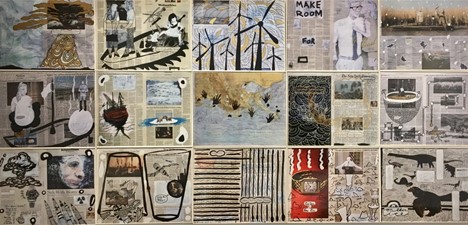


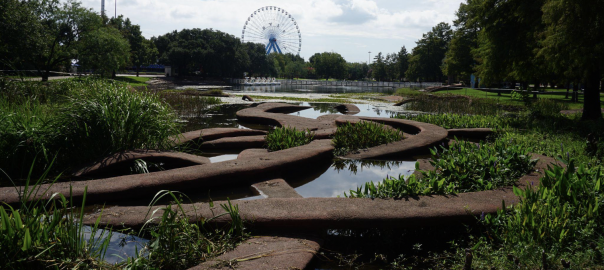
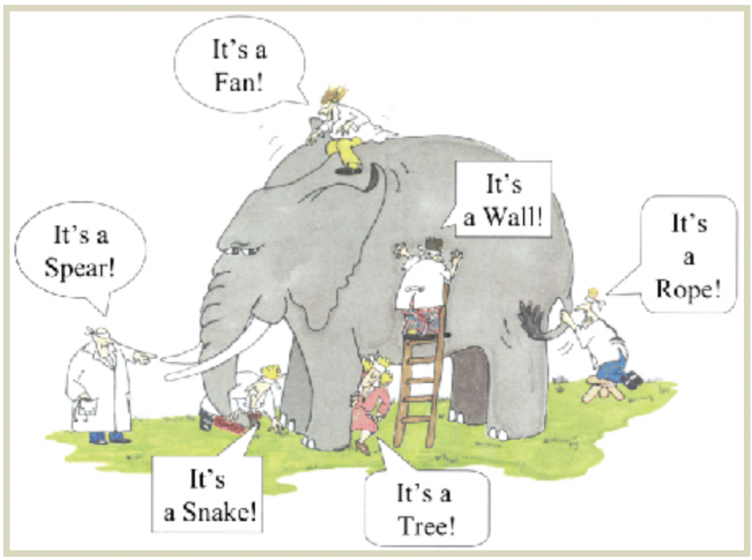
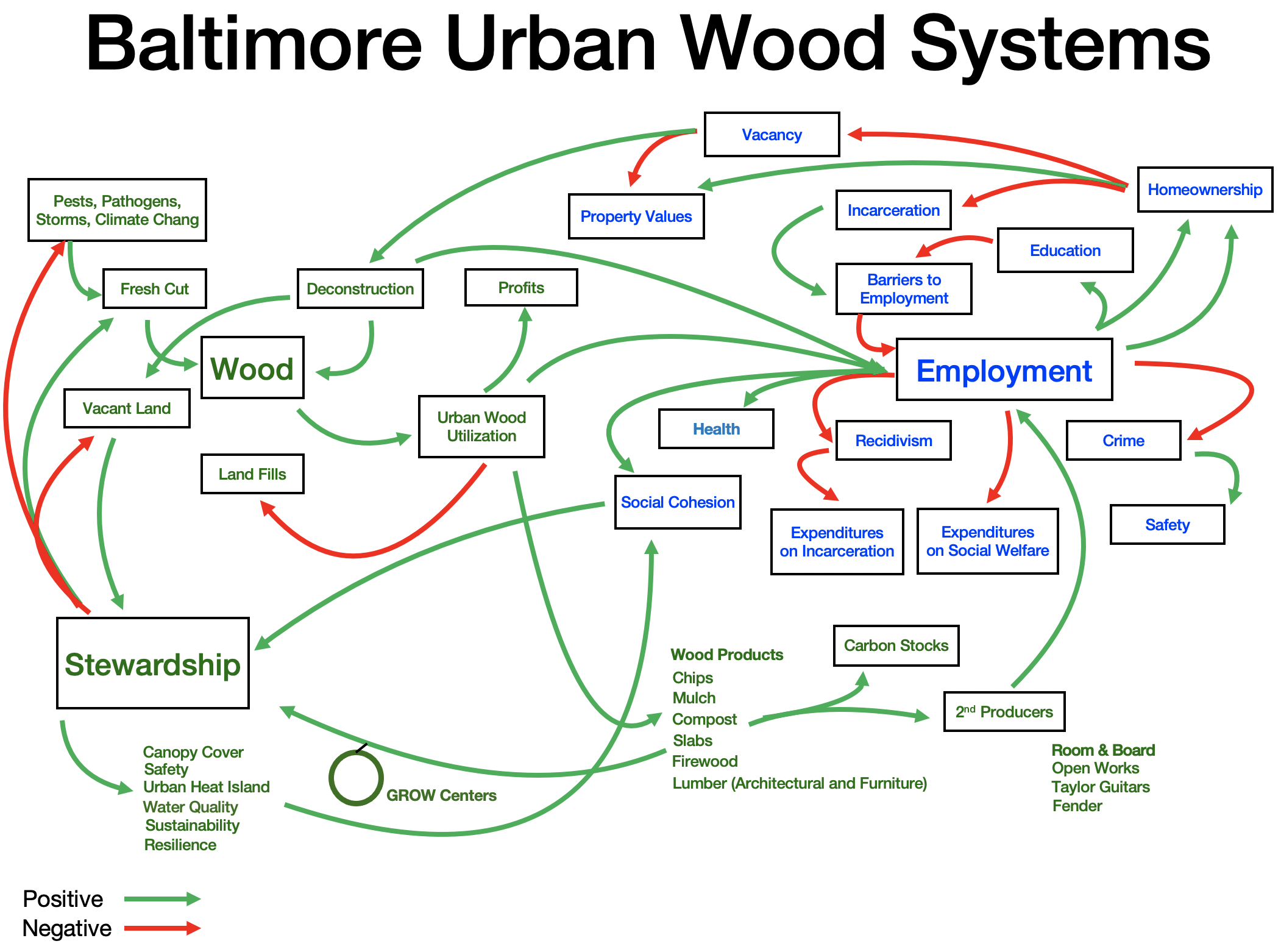
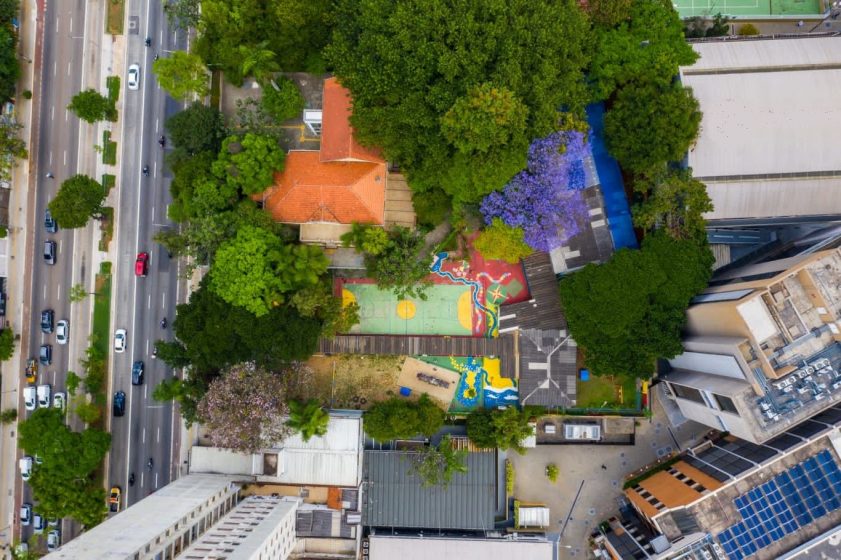
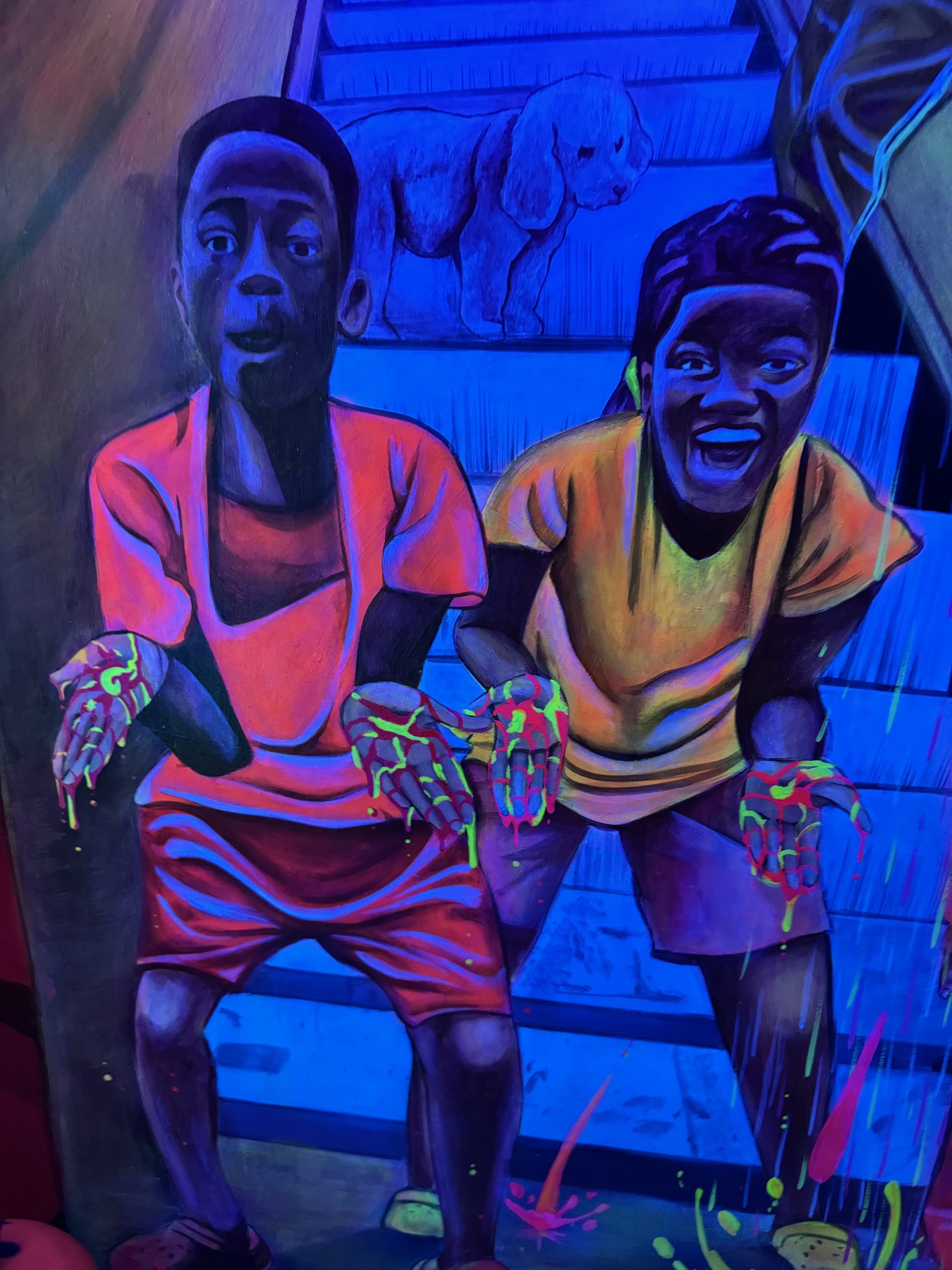
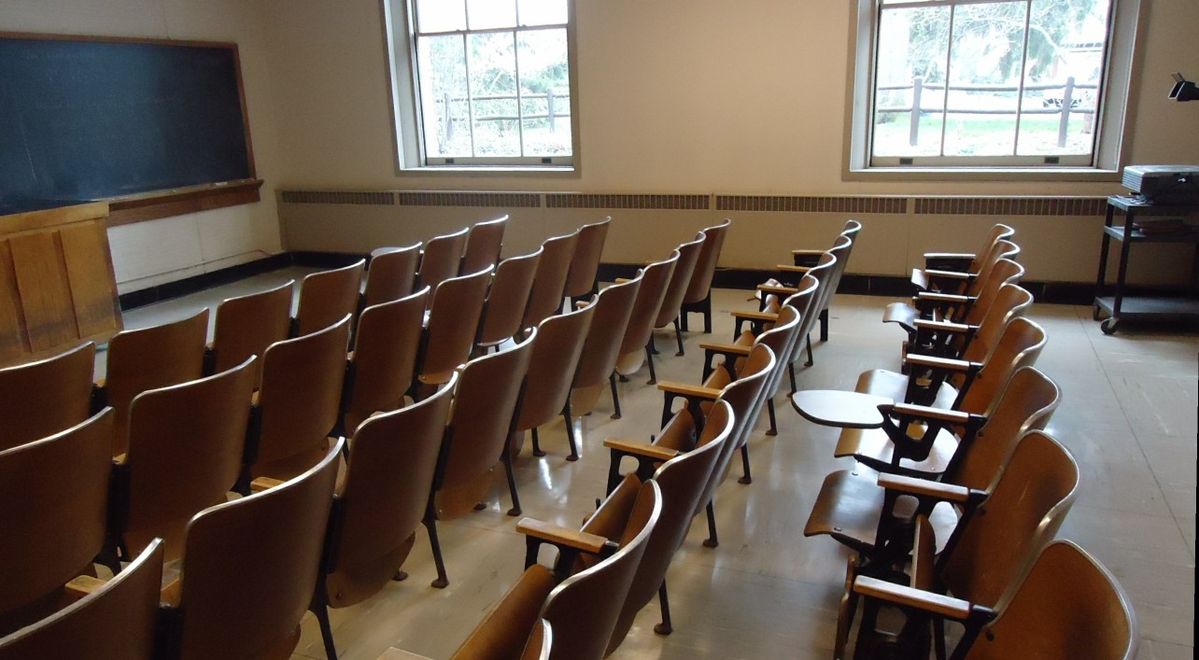
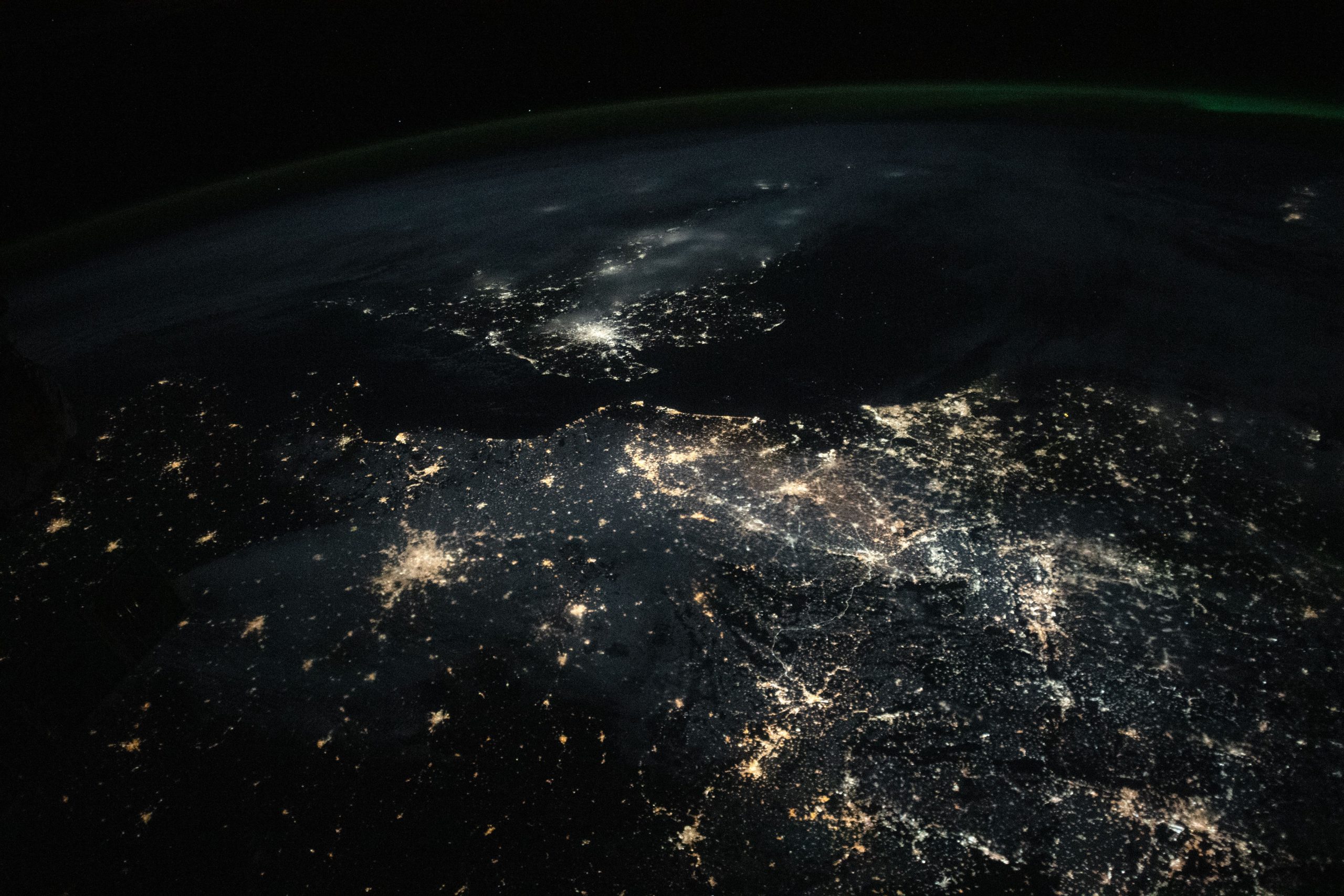
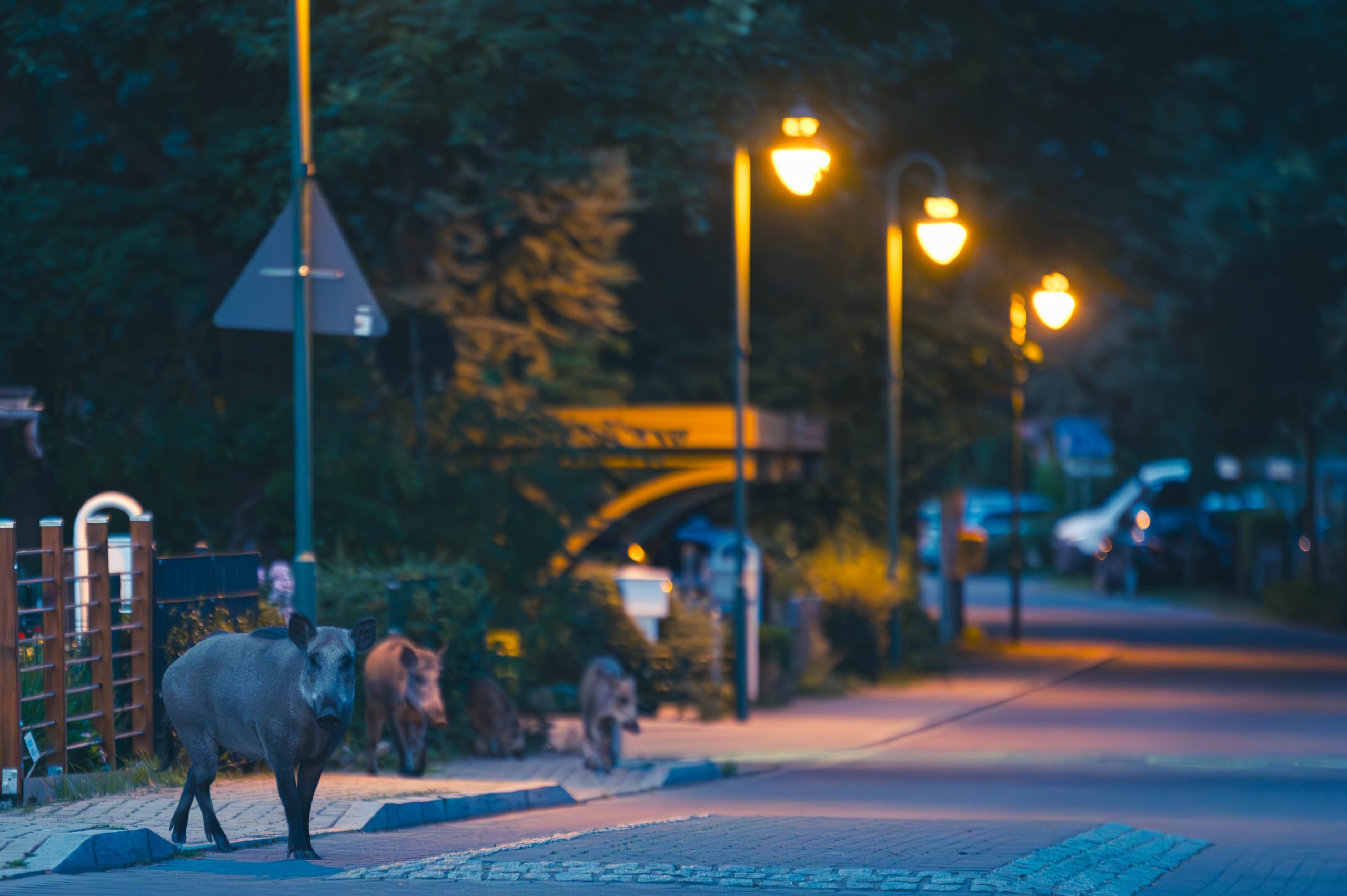
Leave a Reply